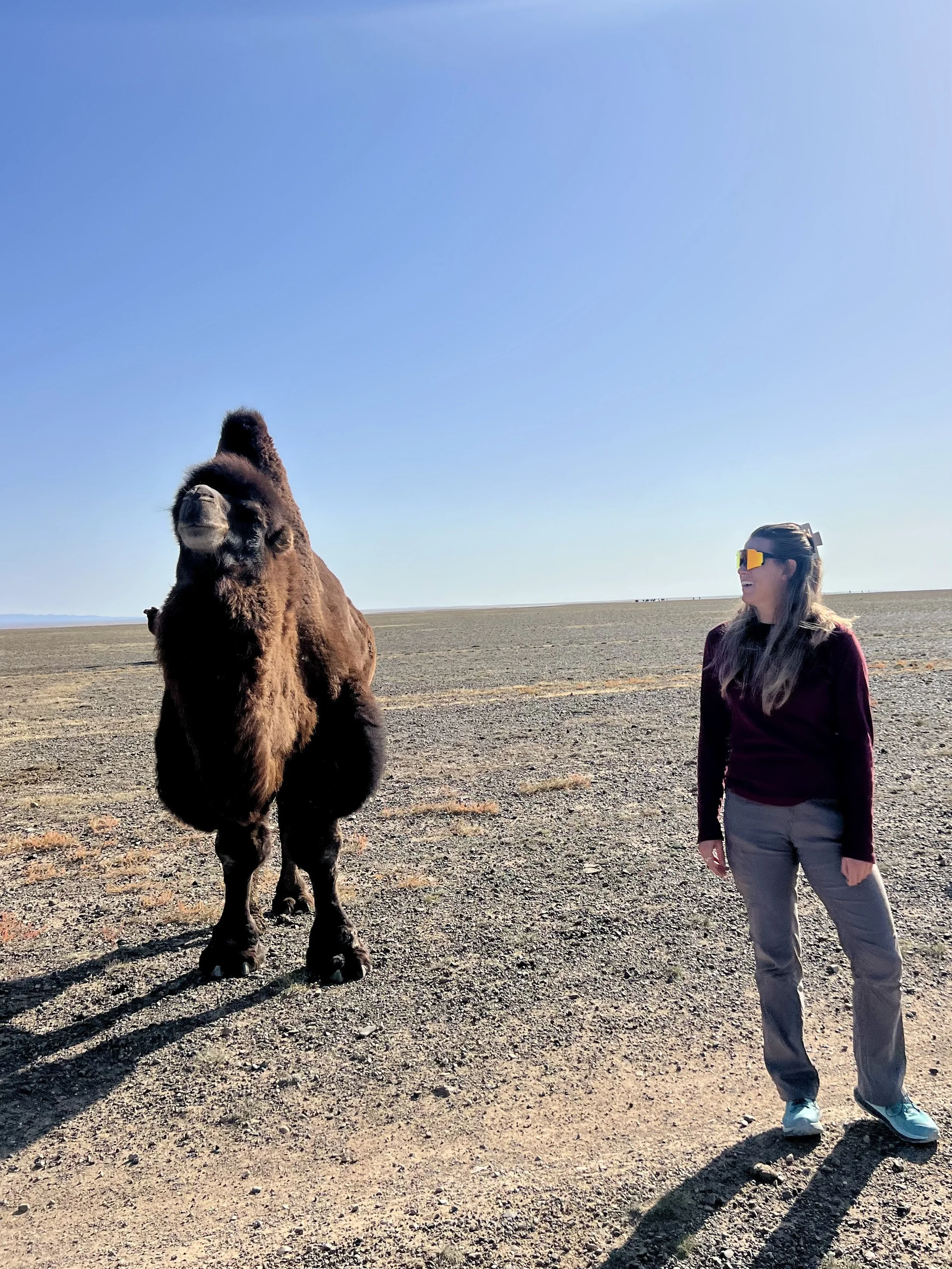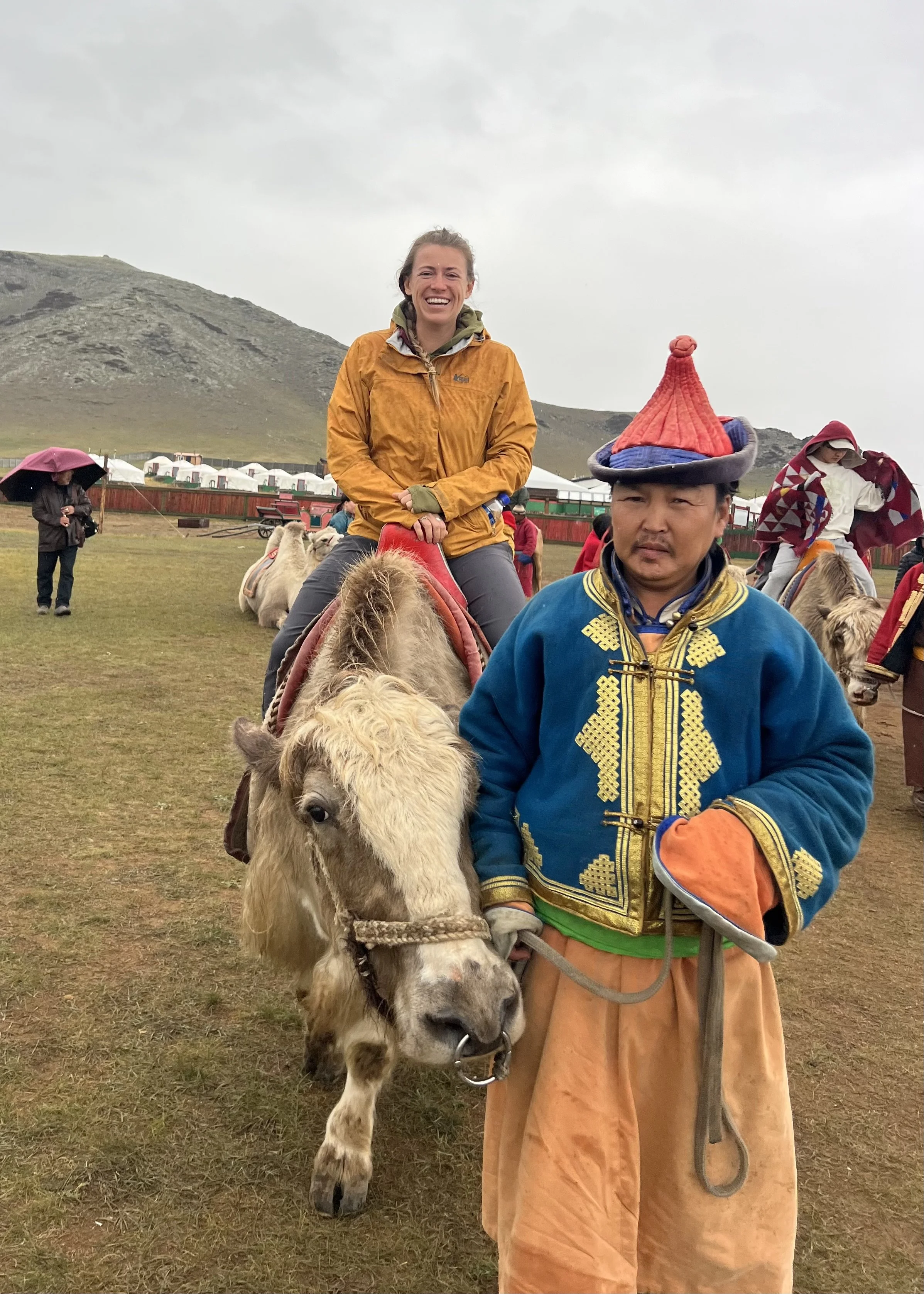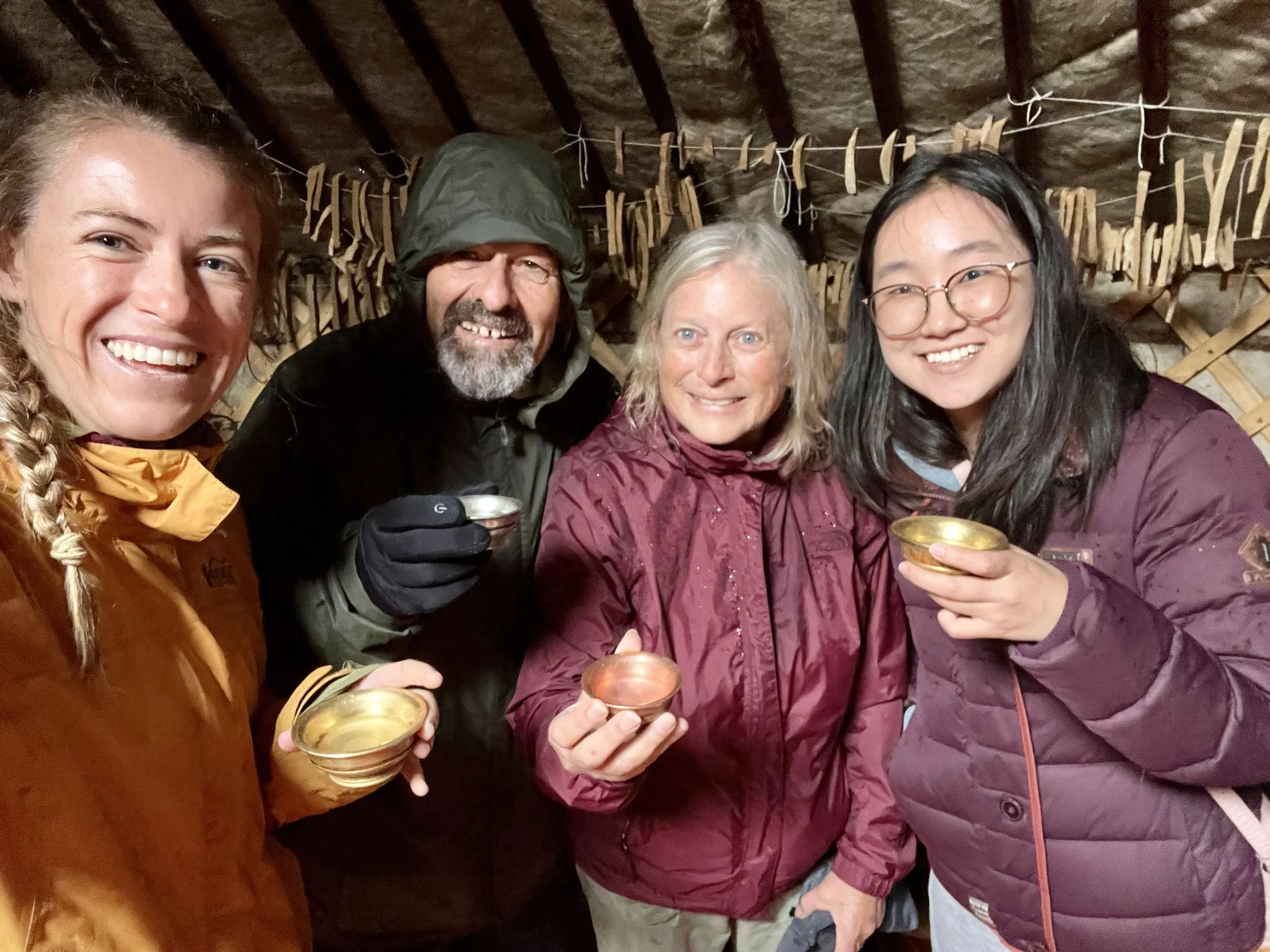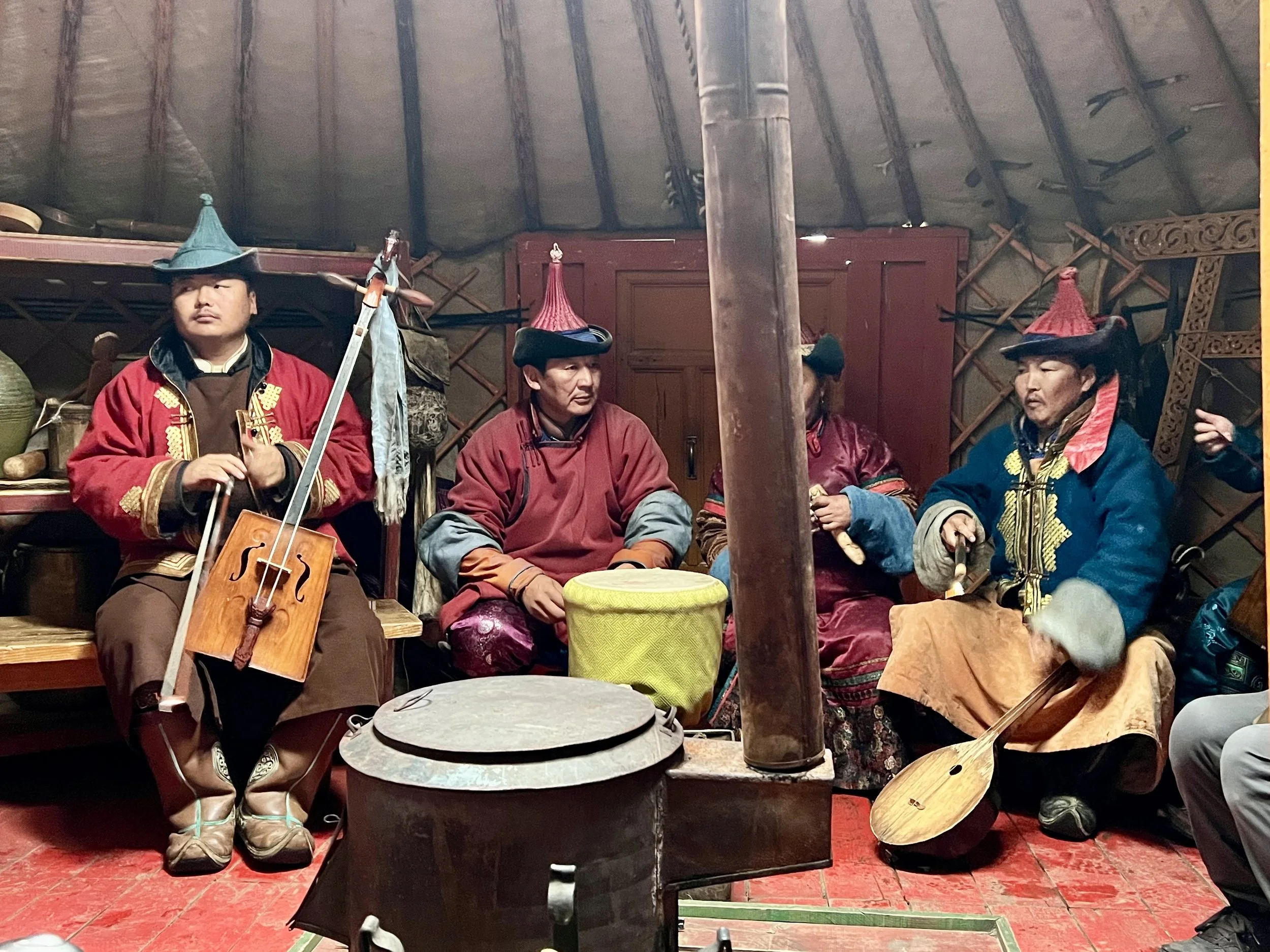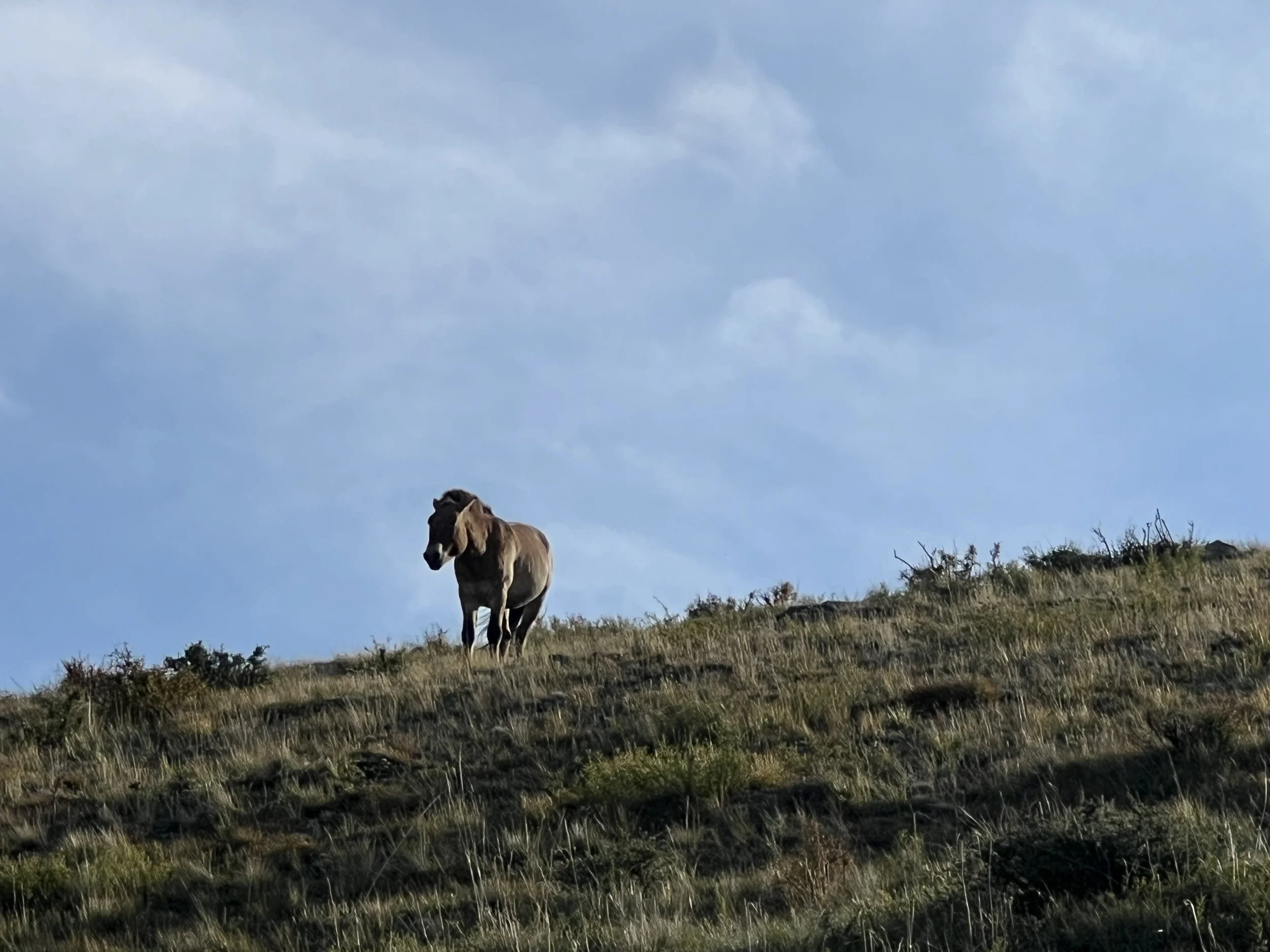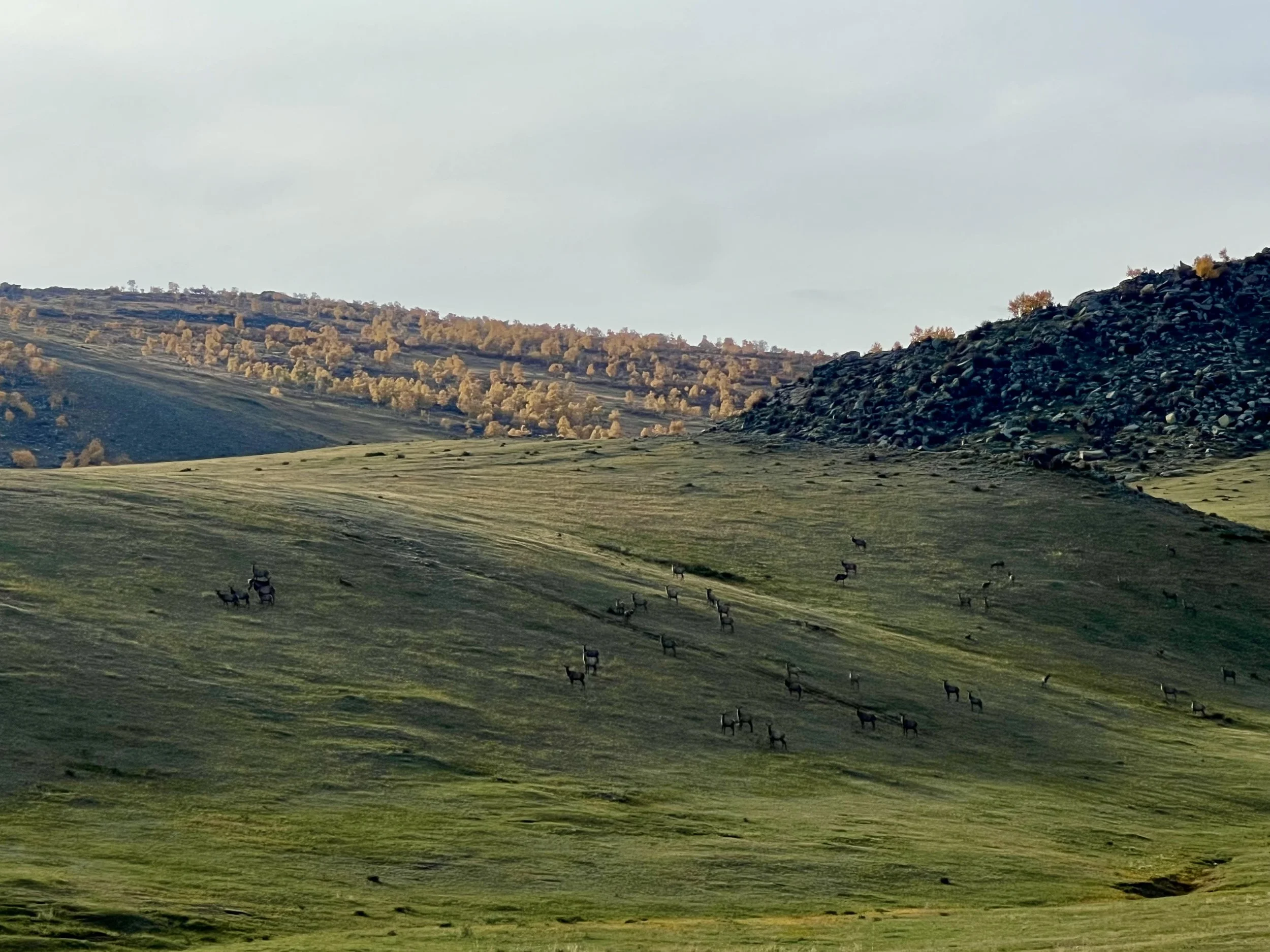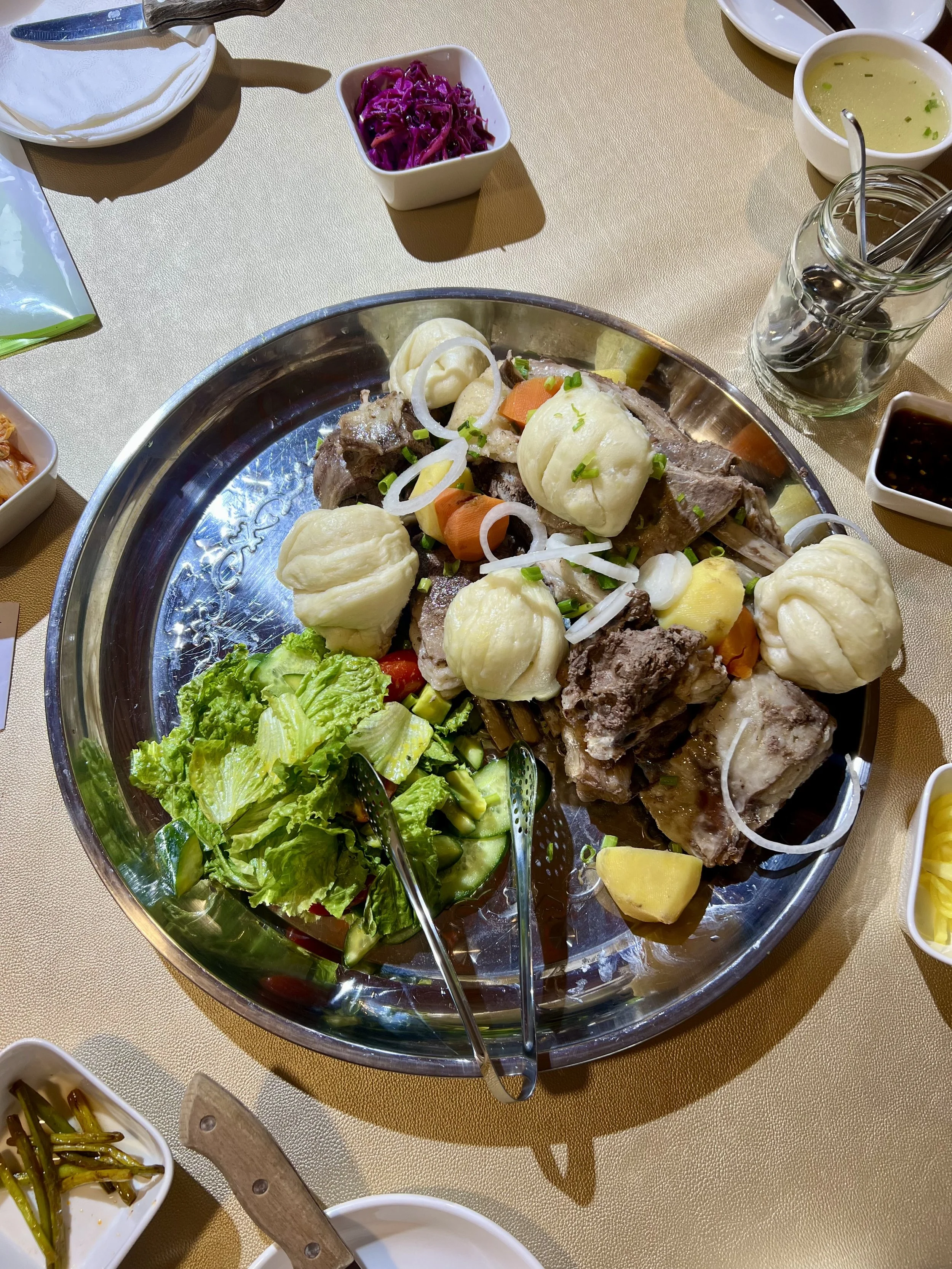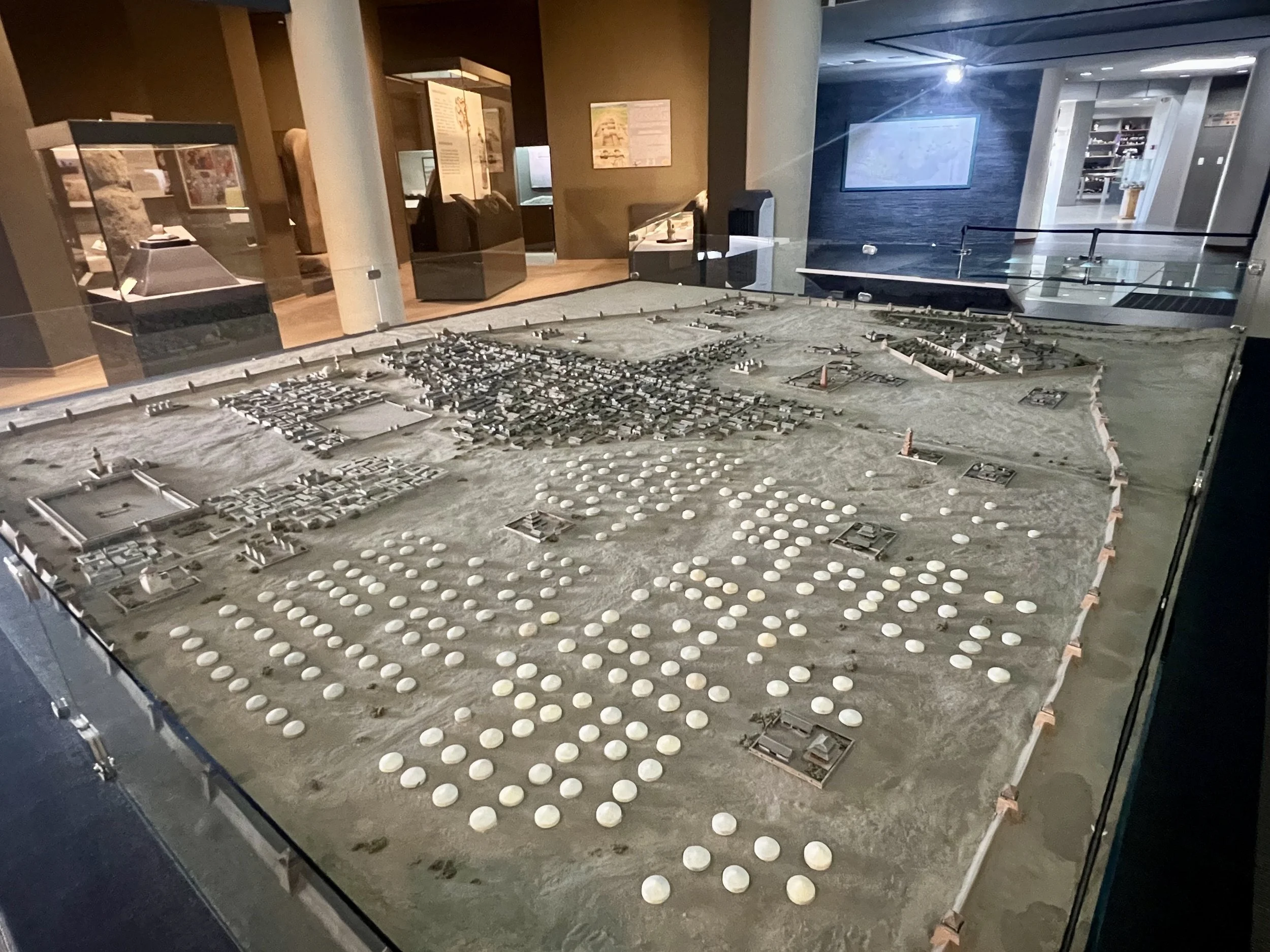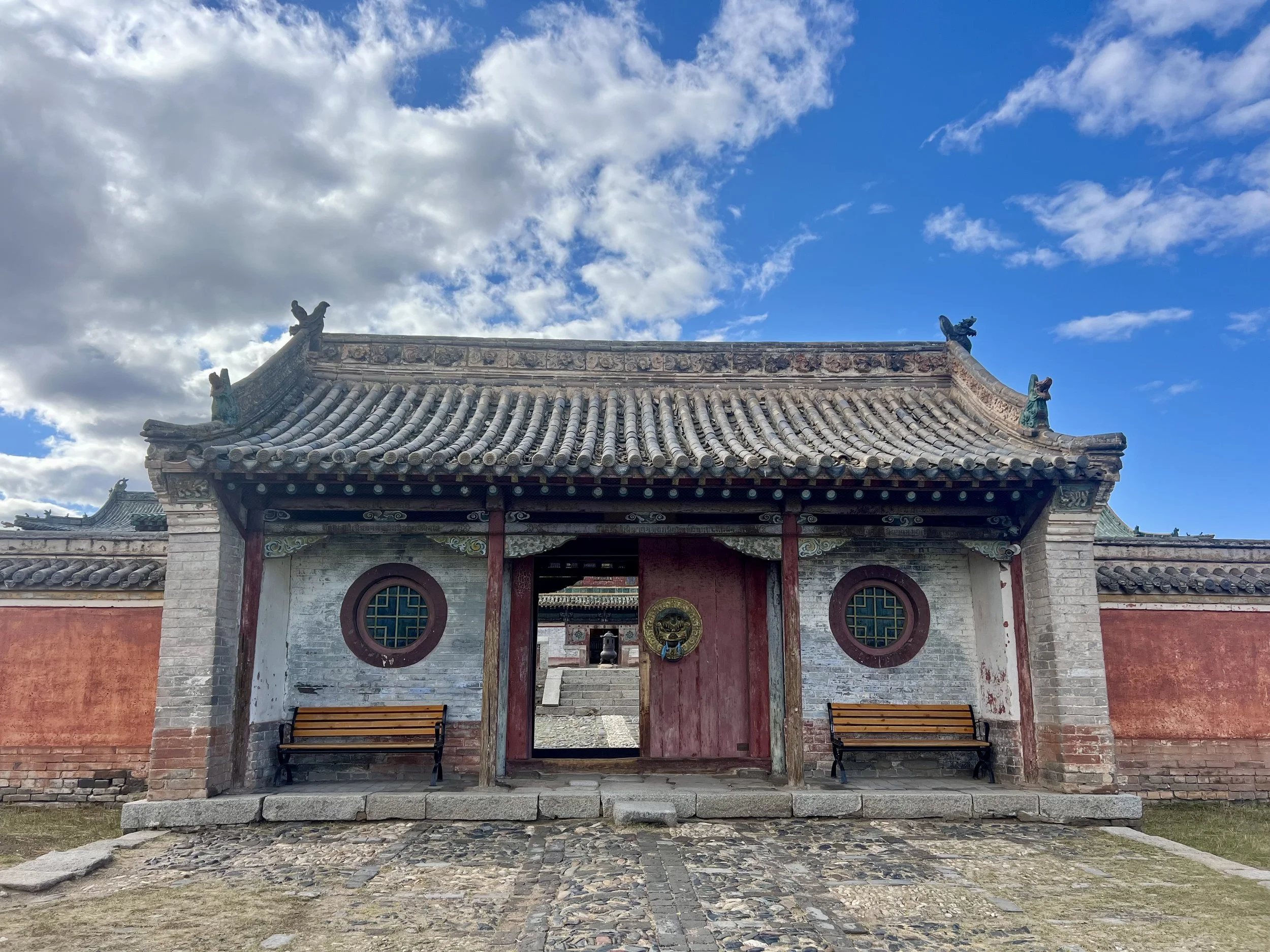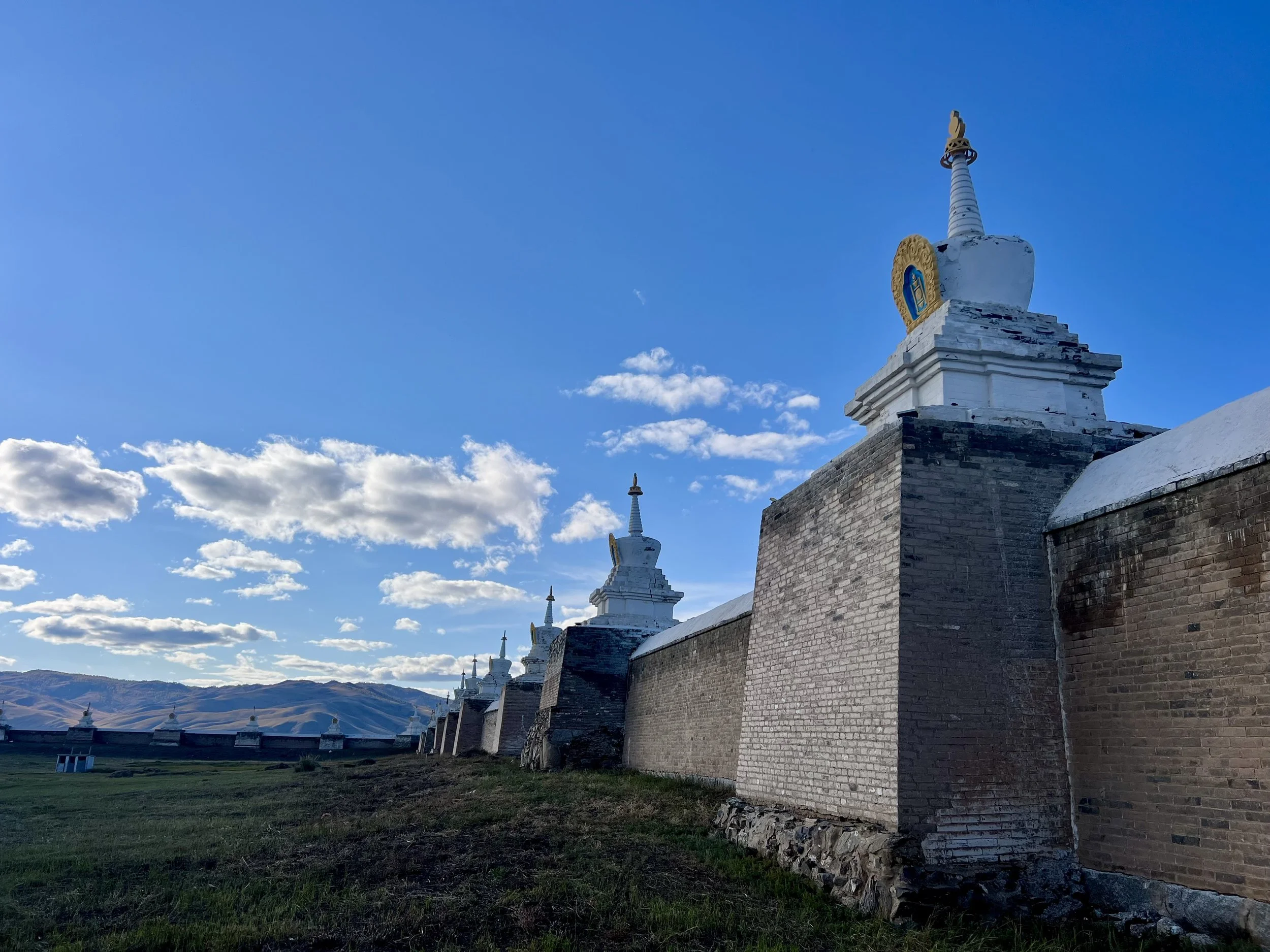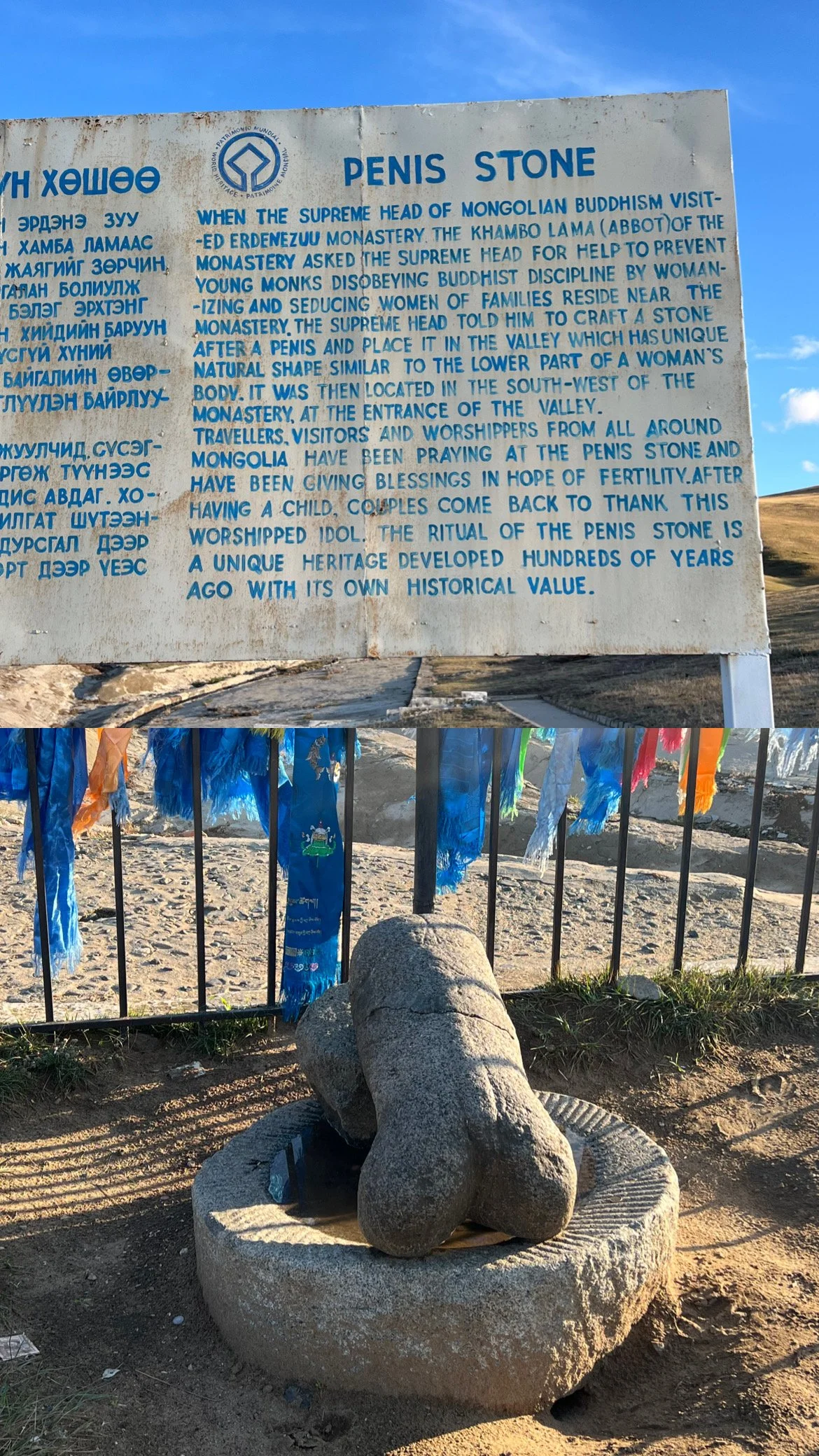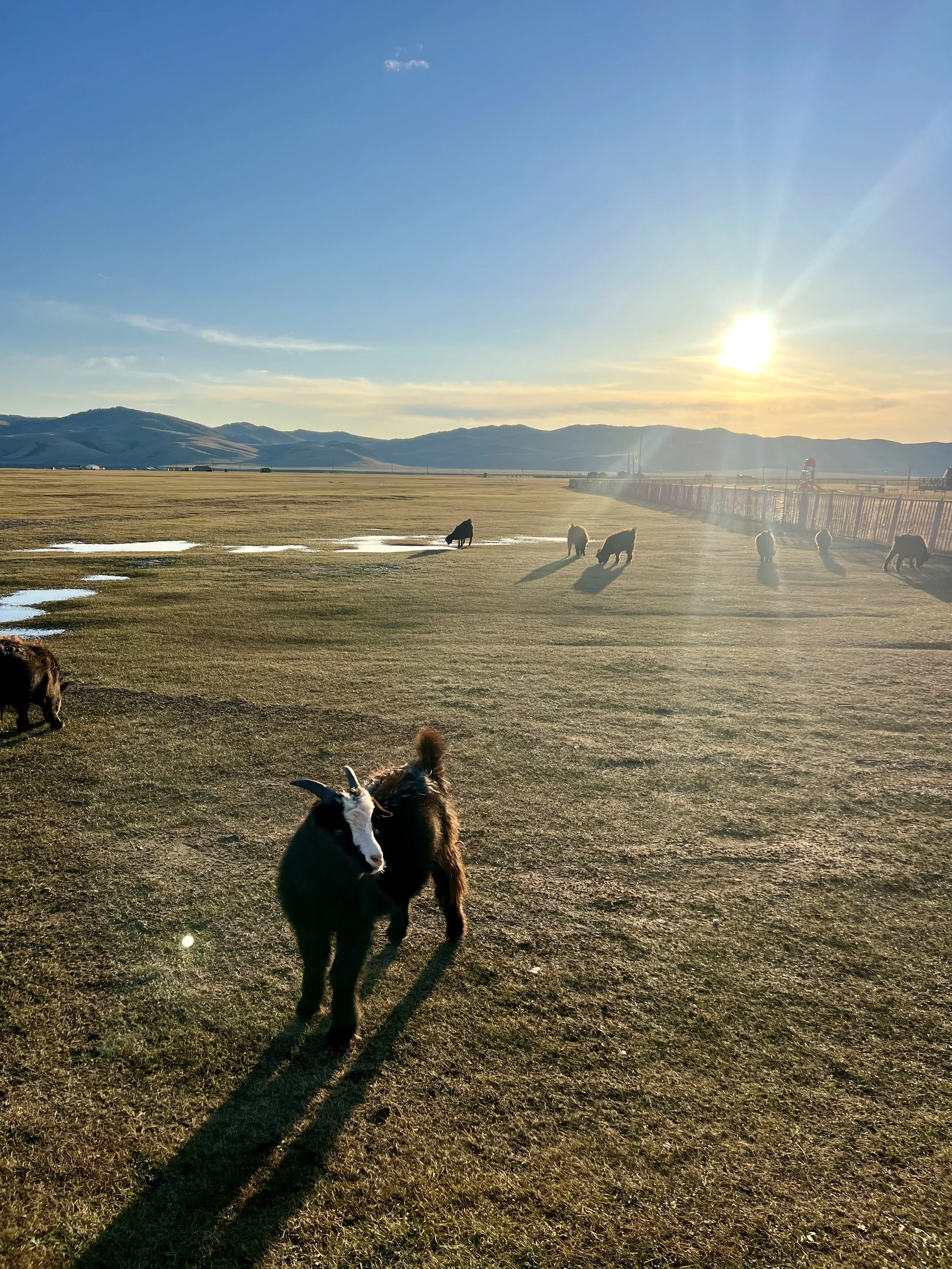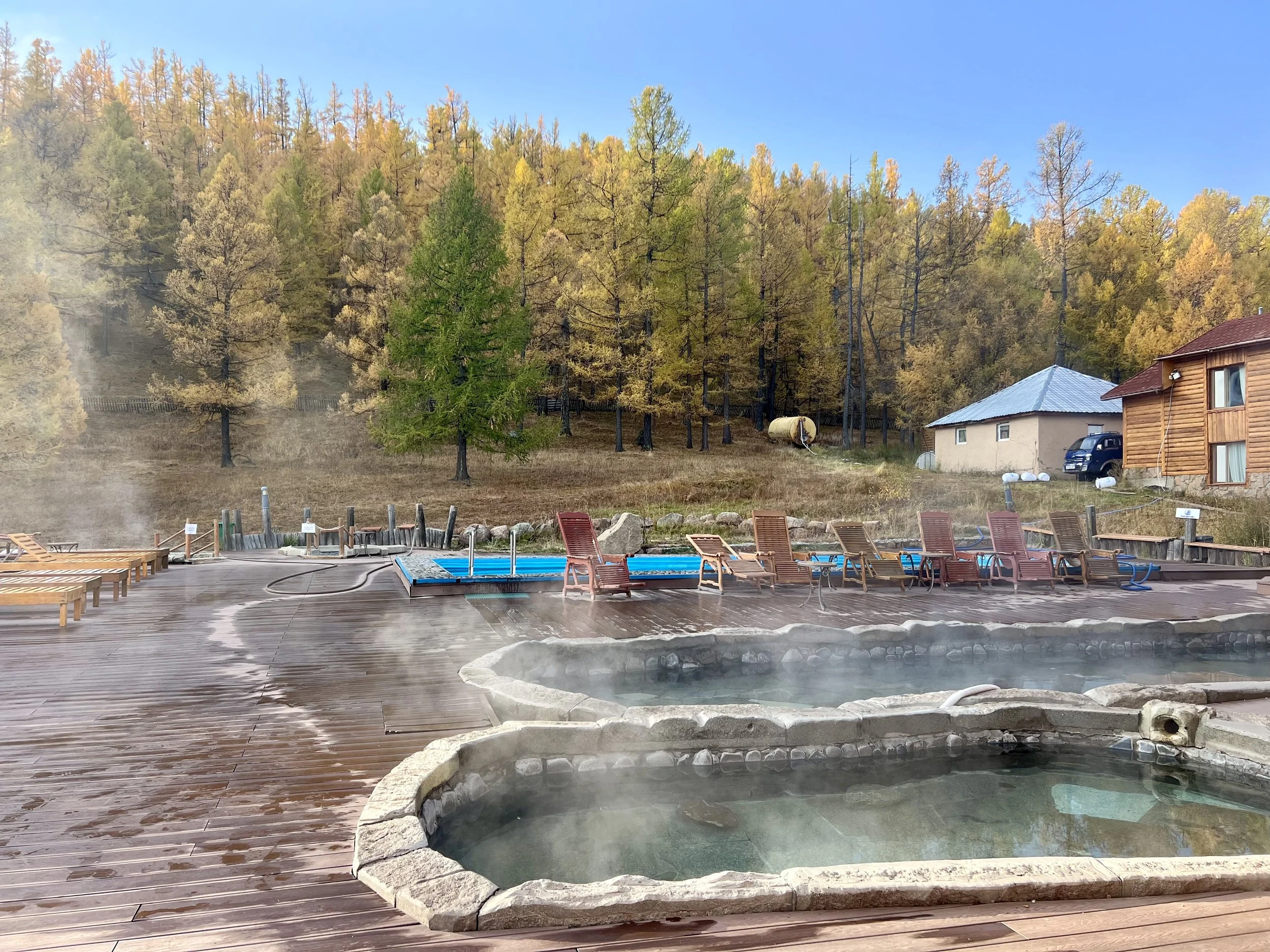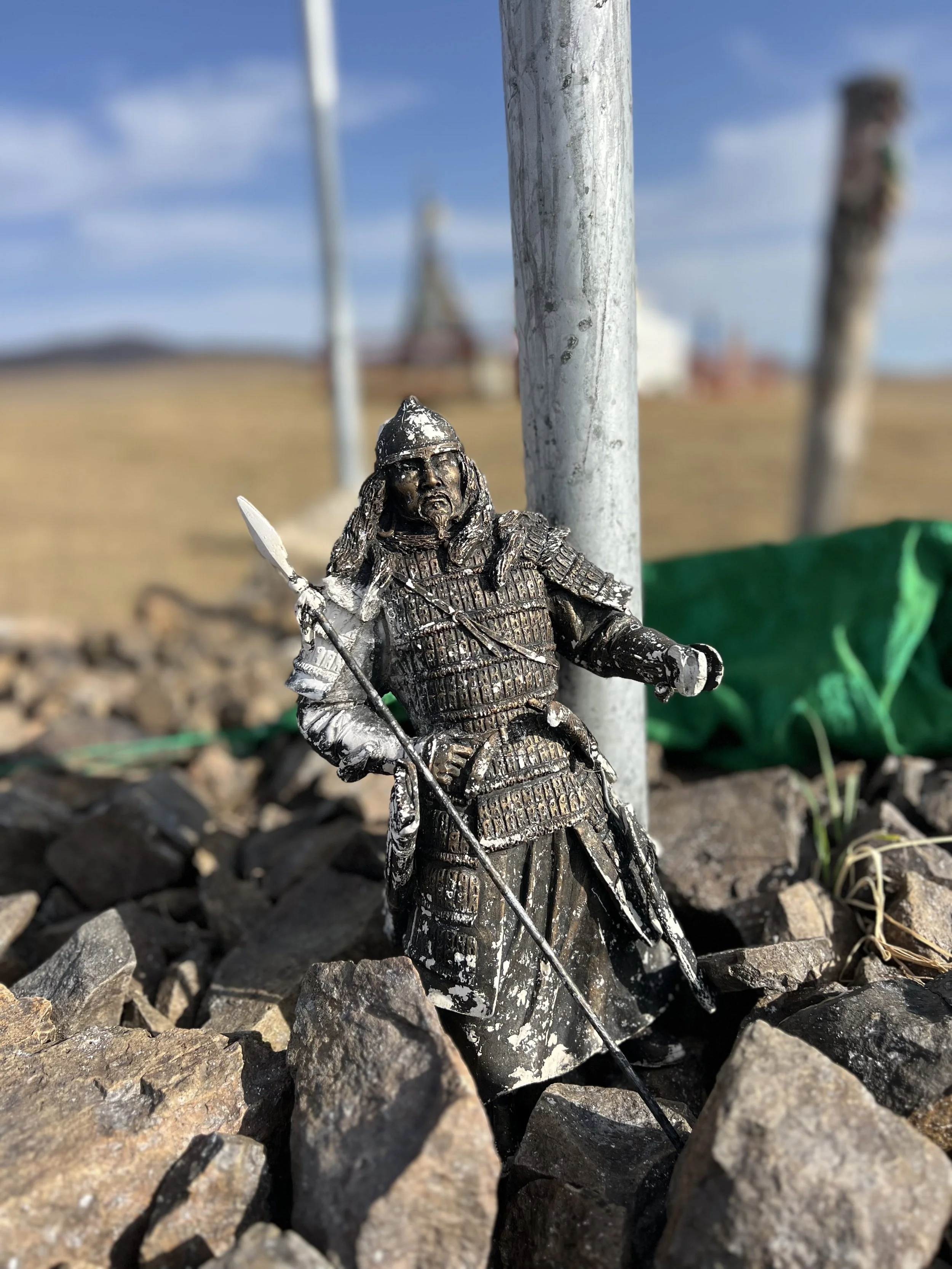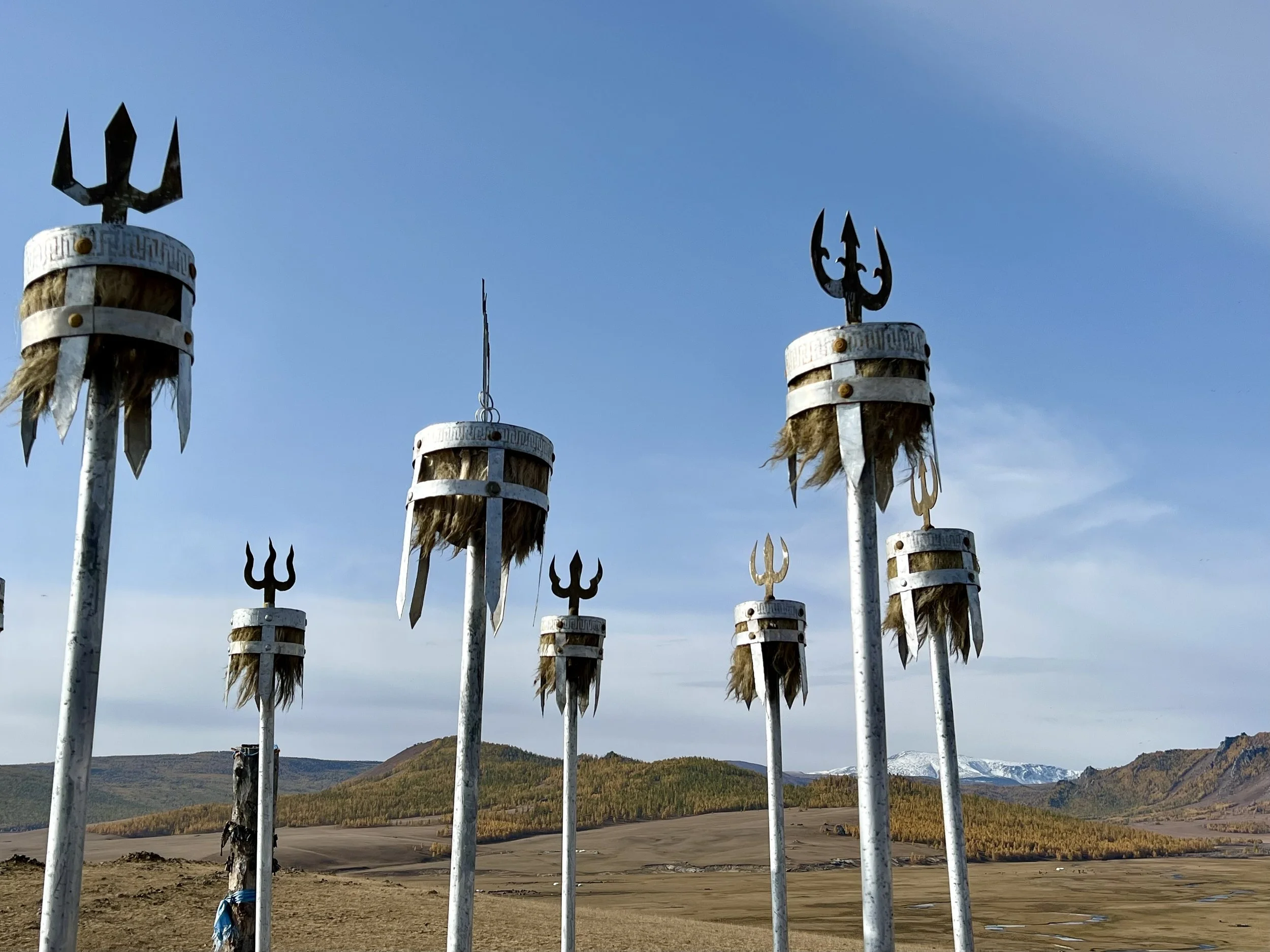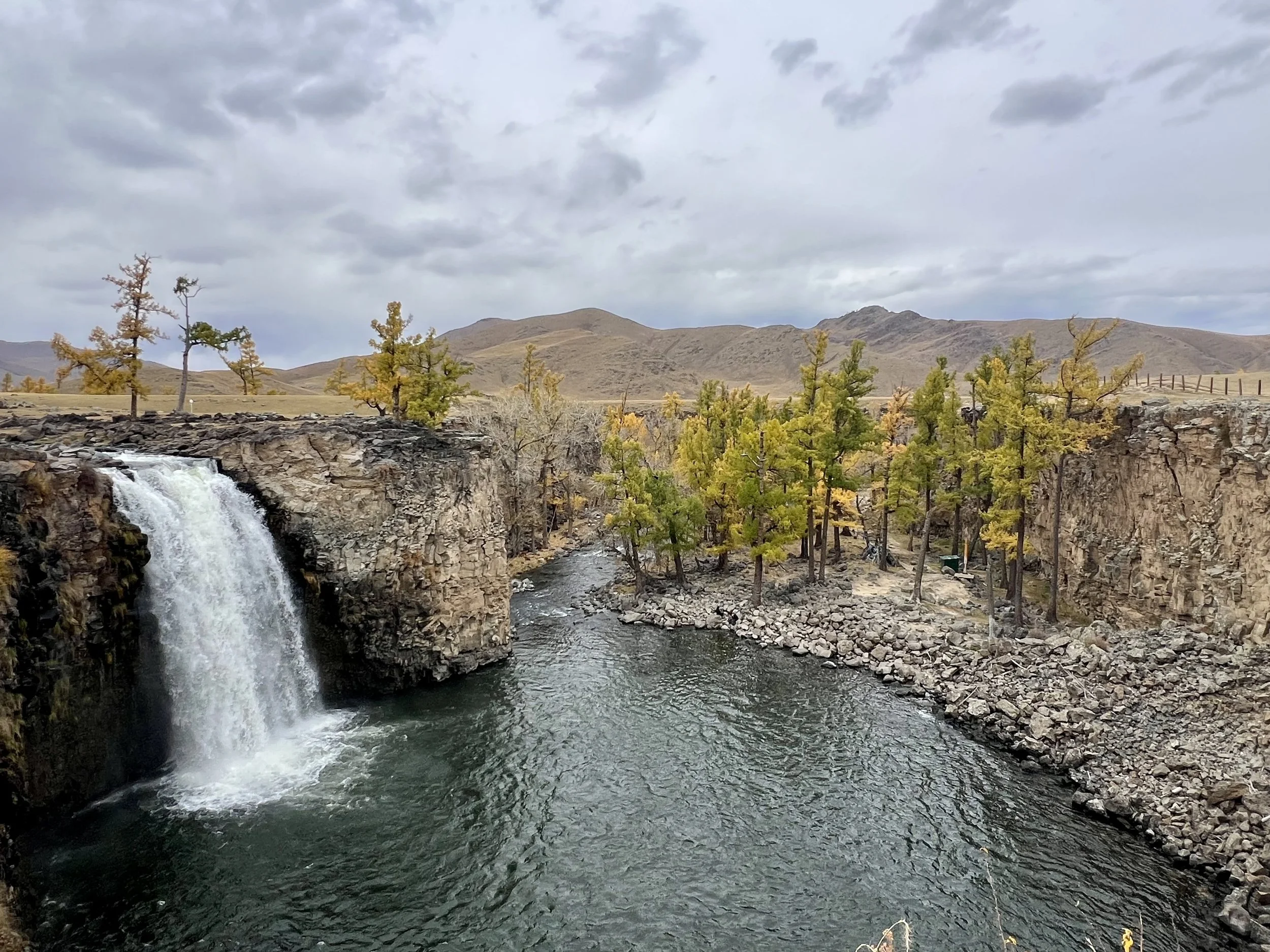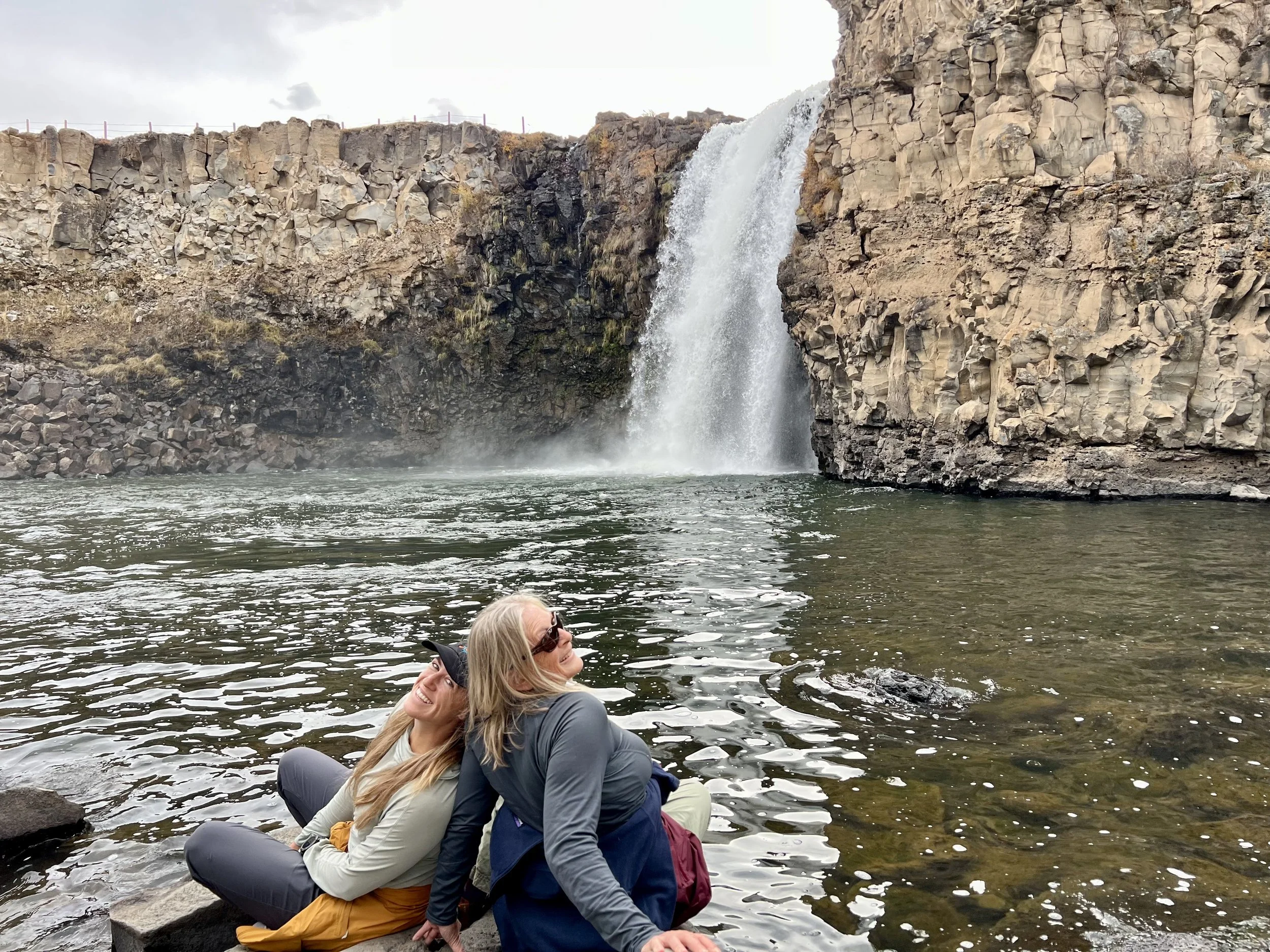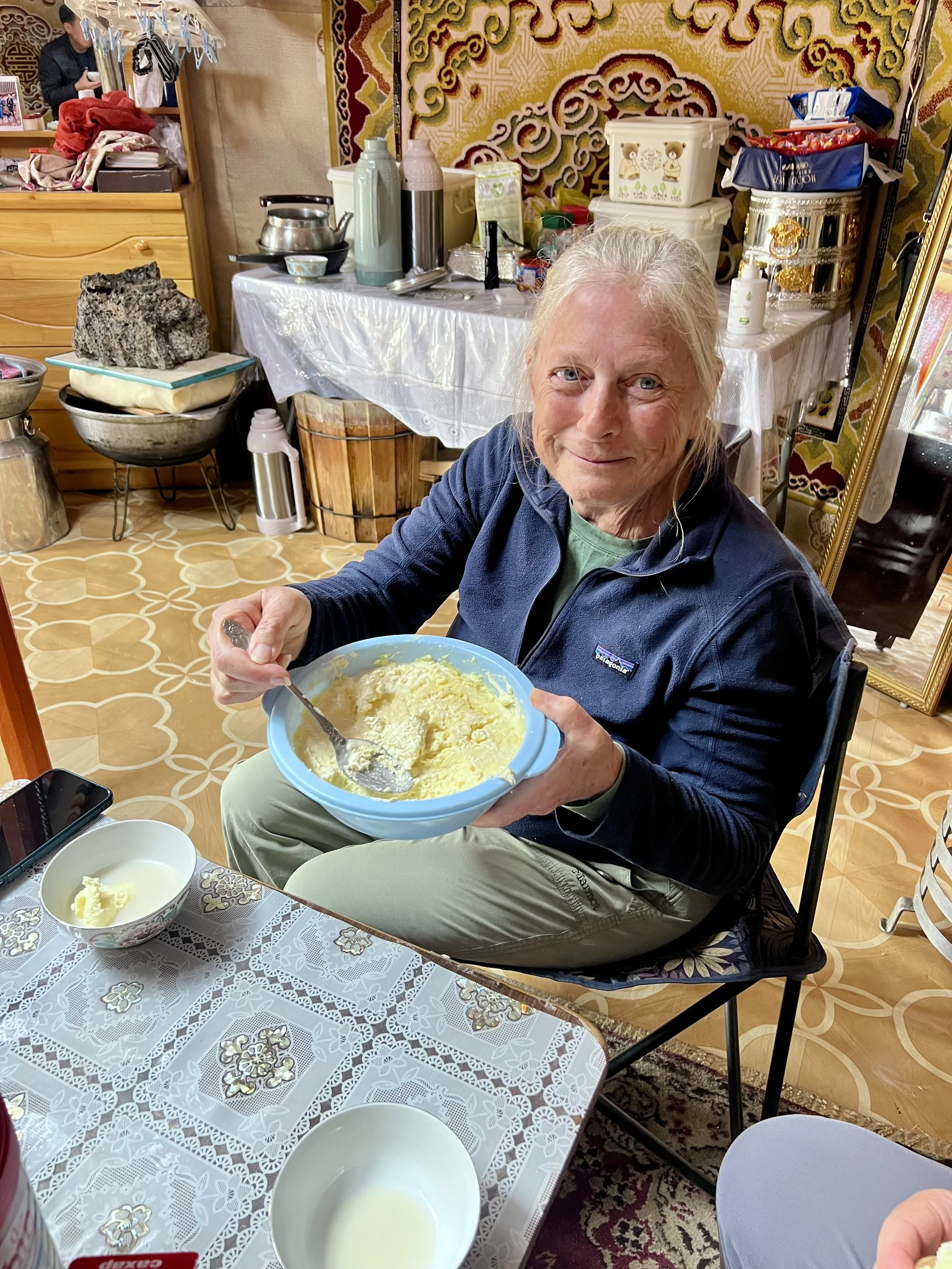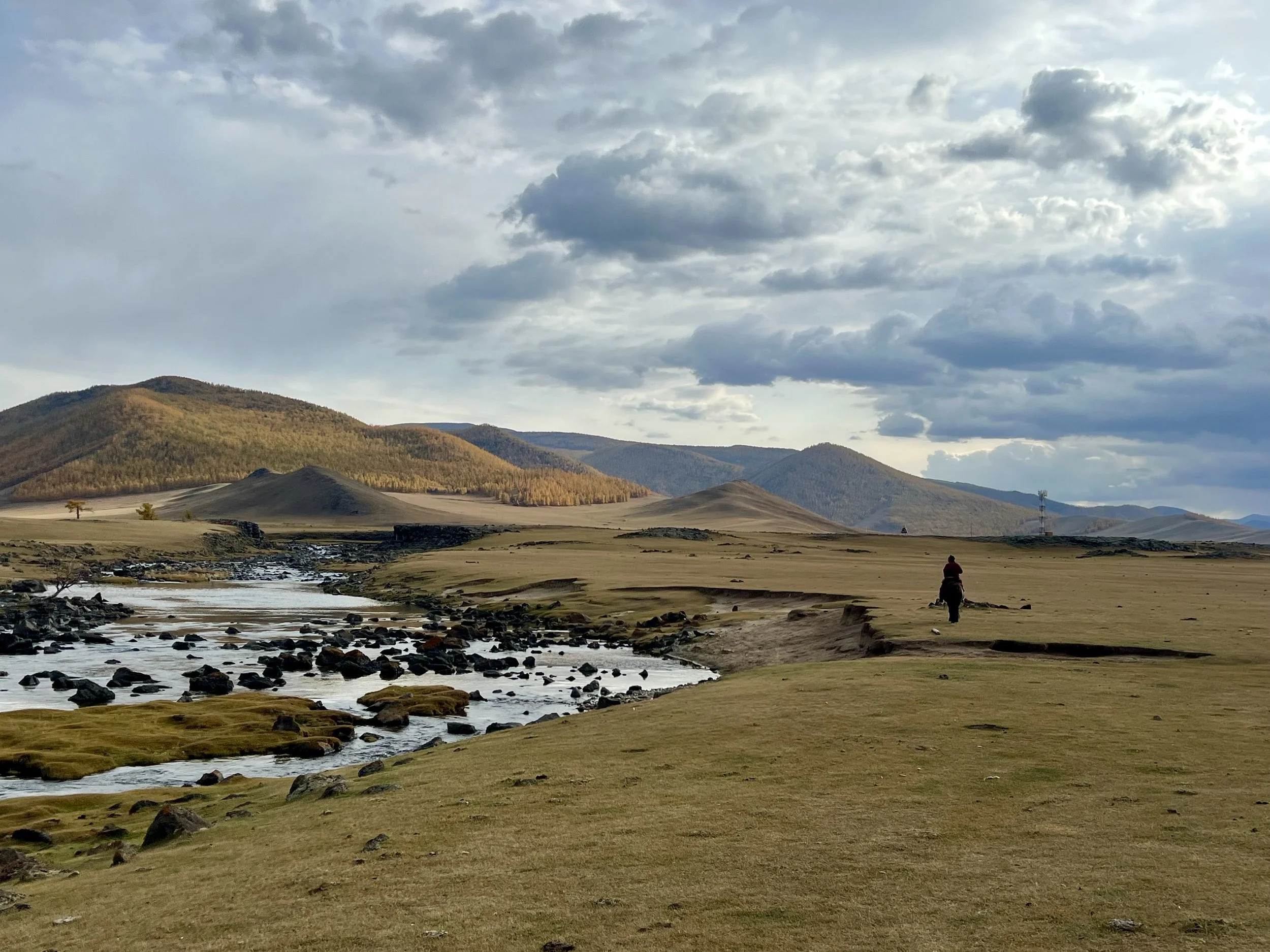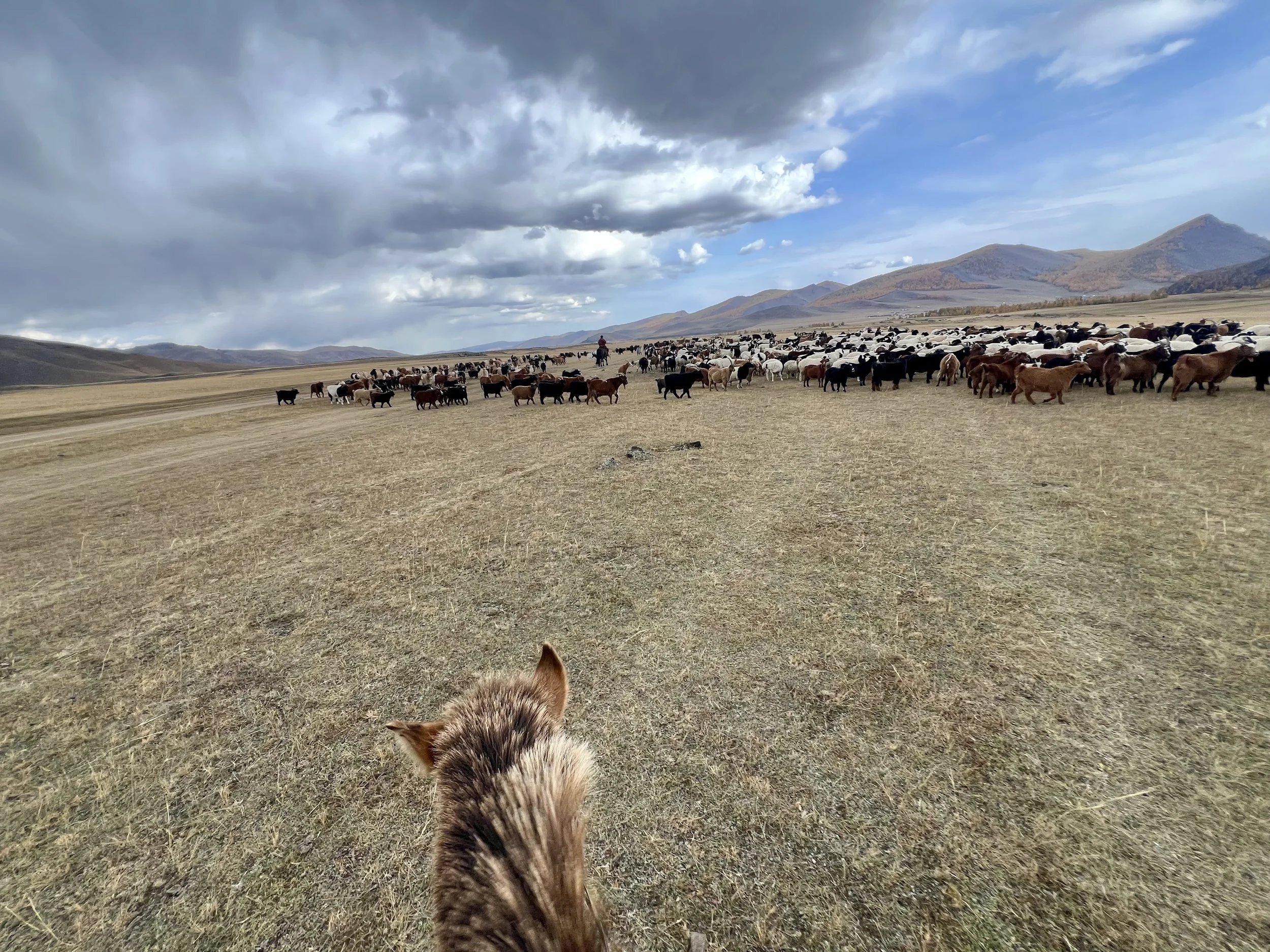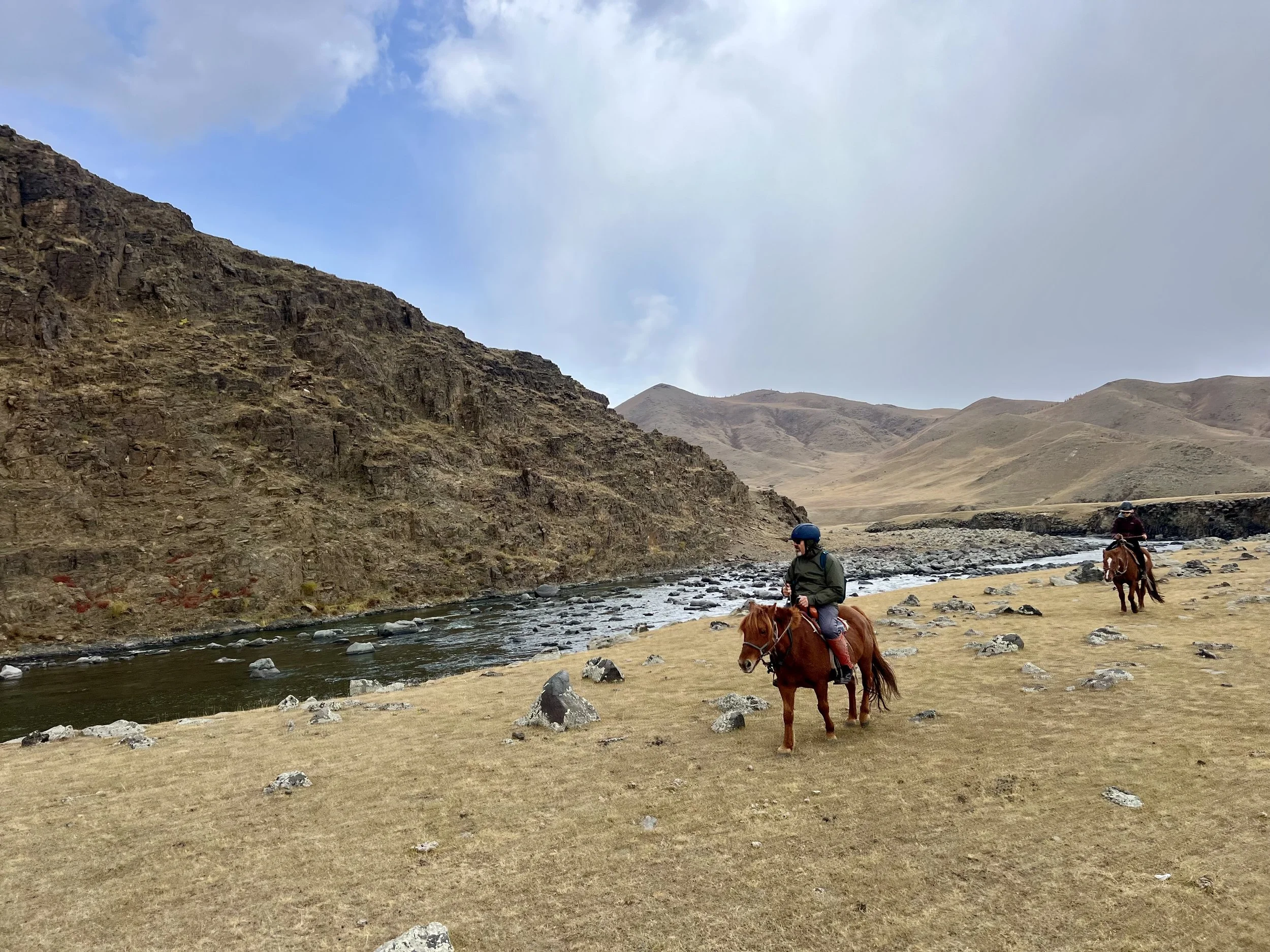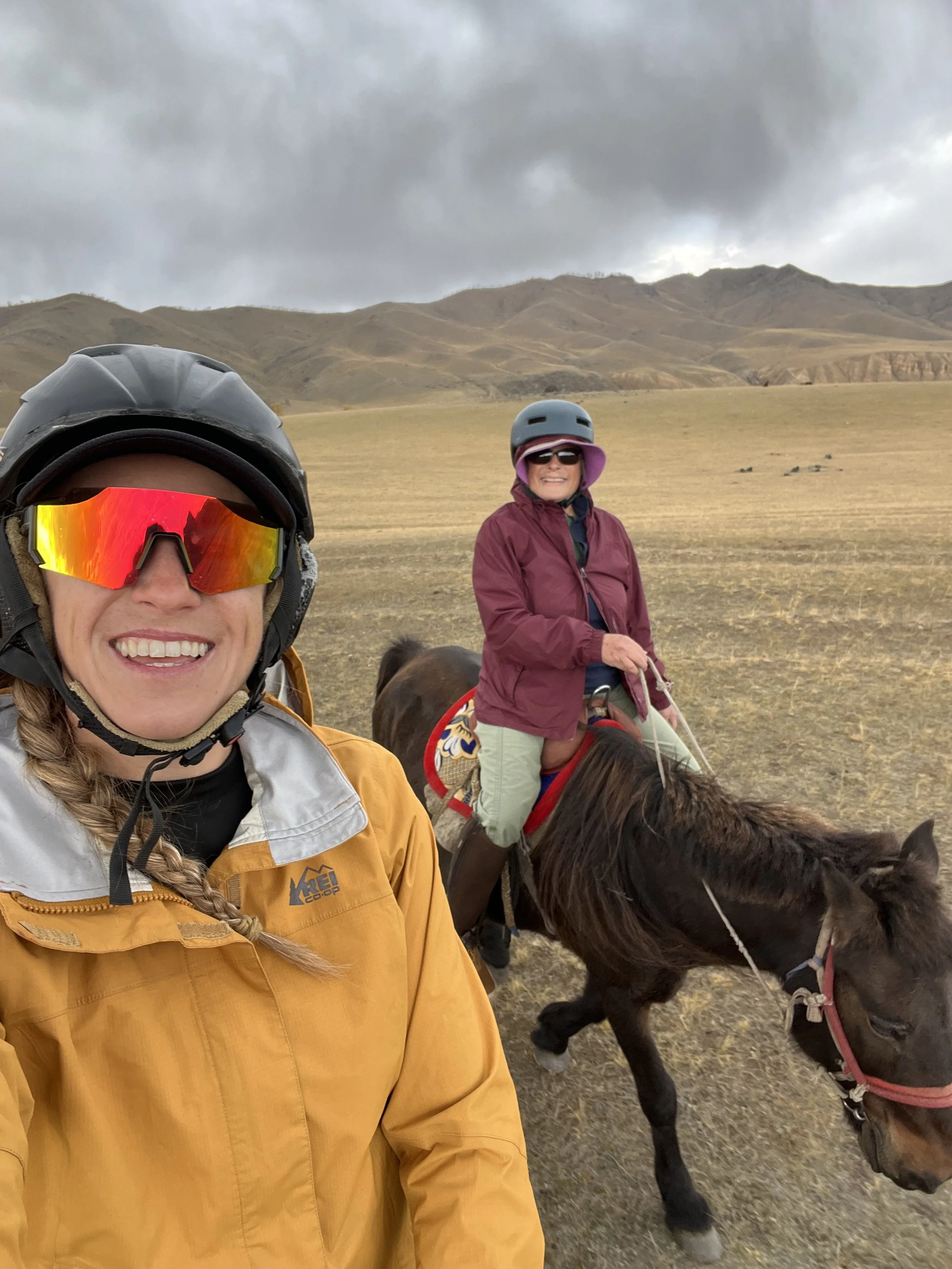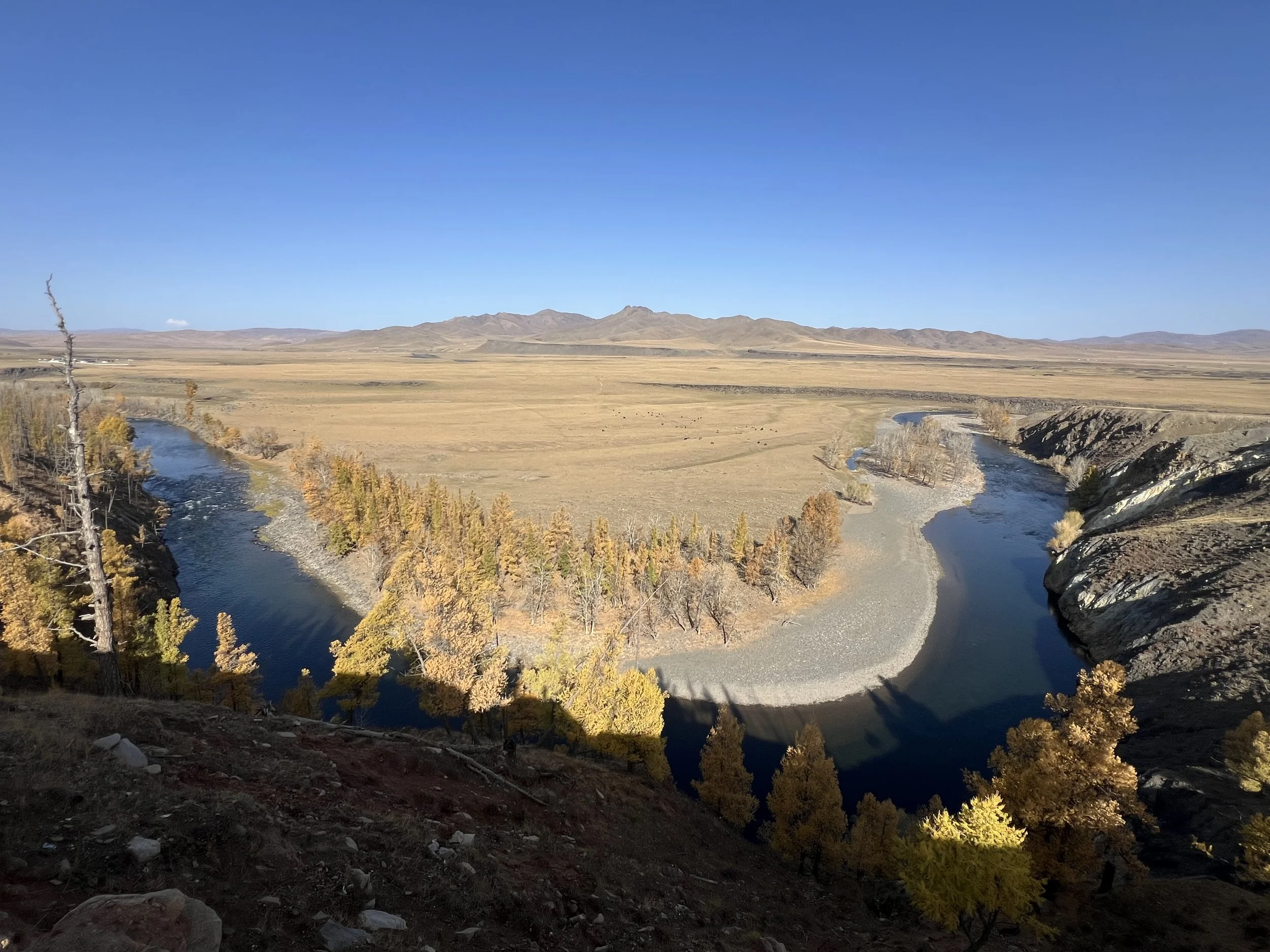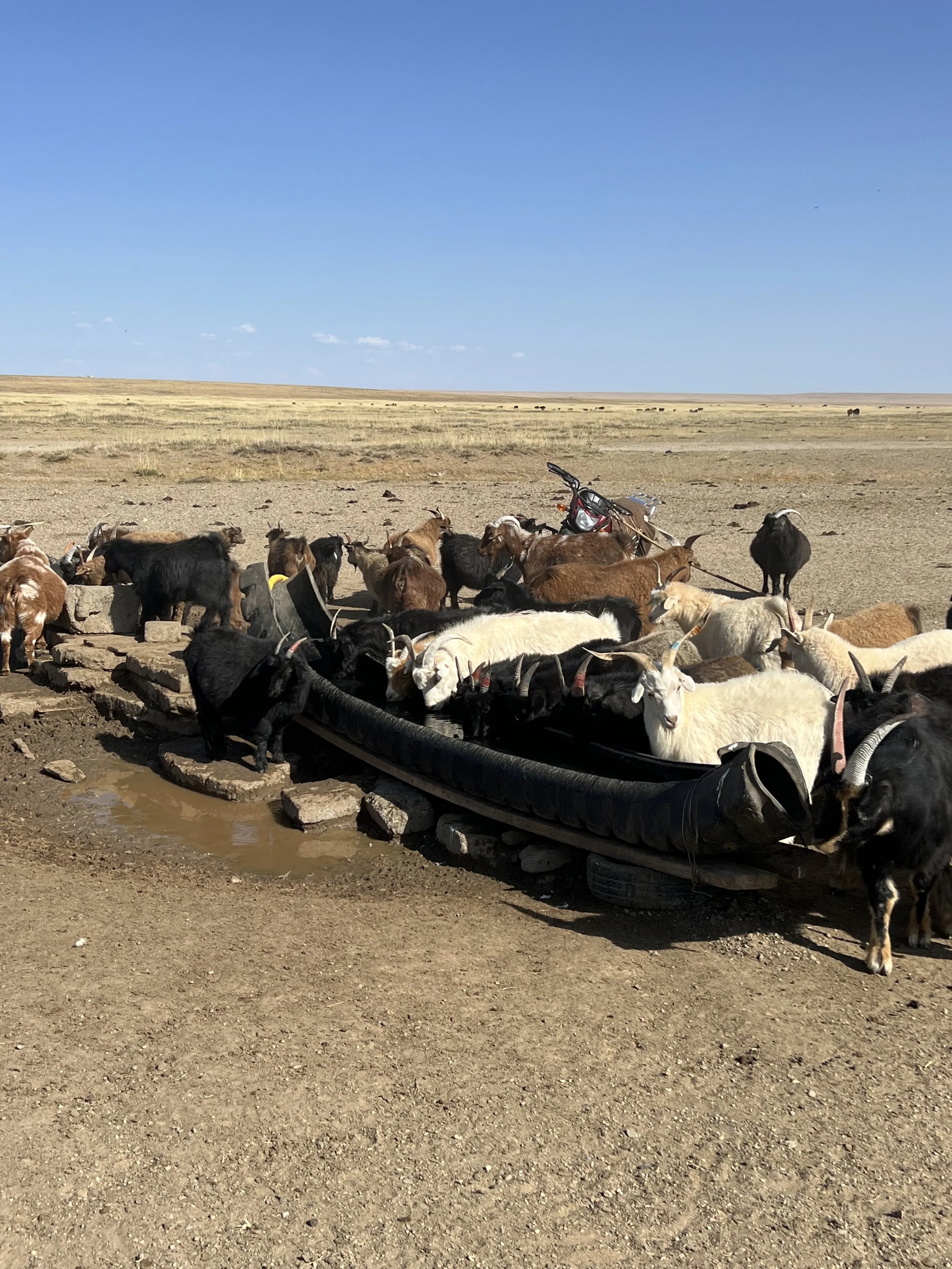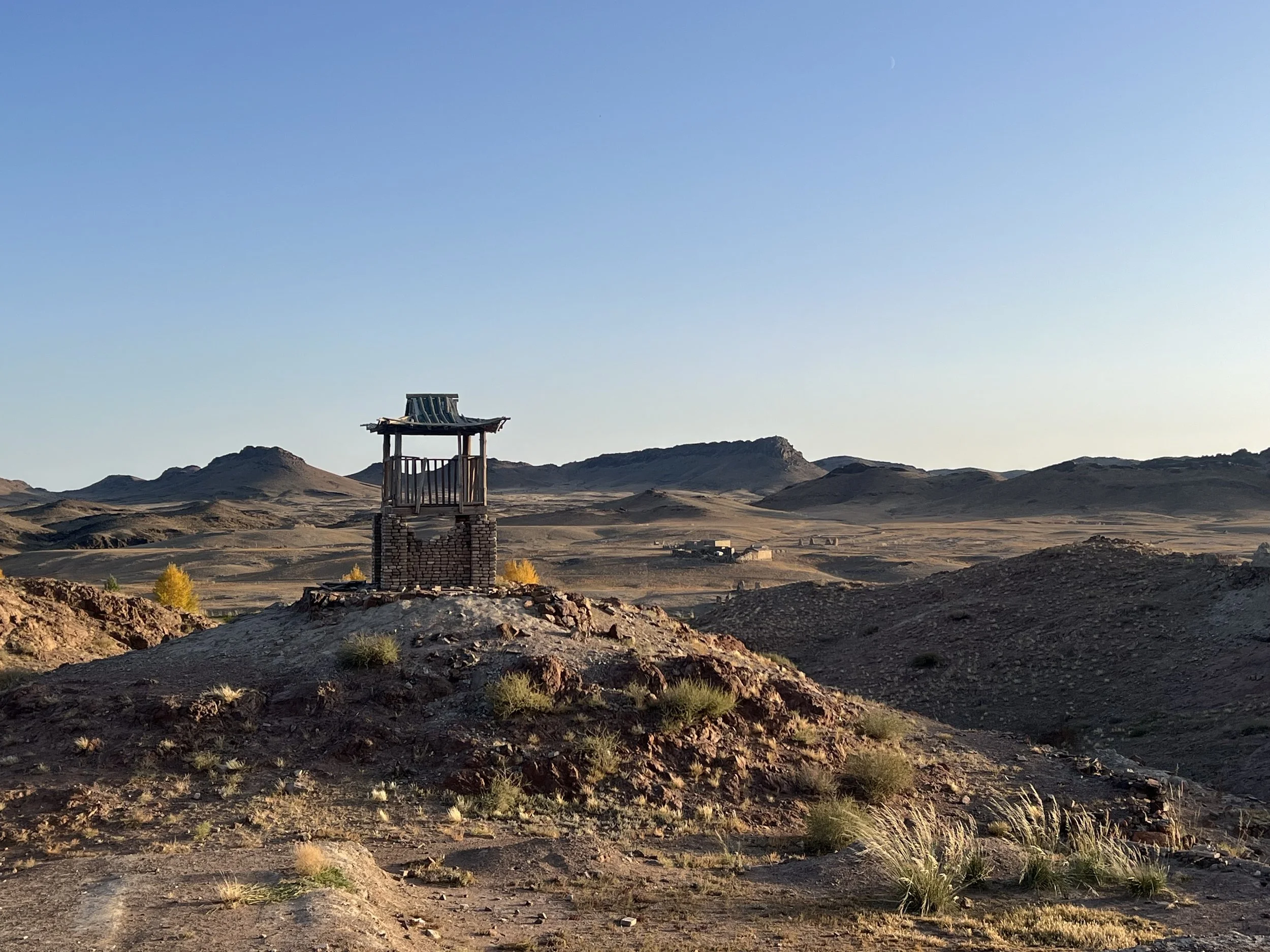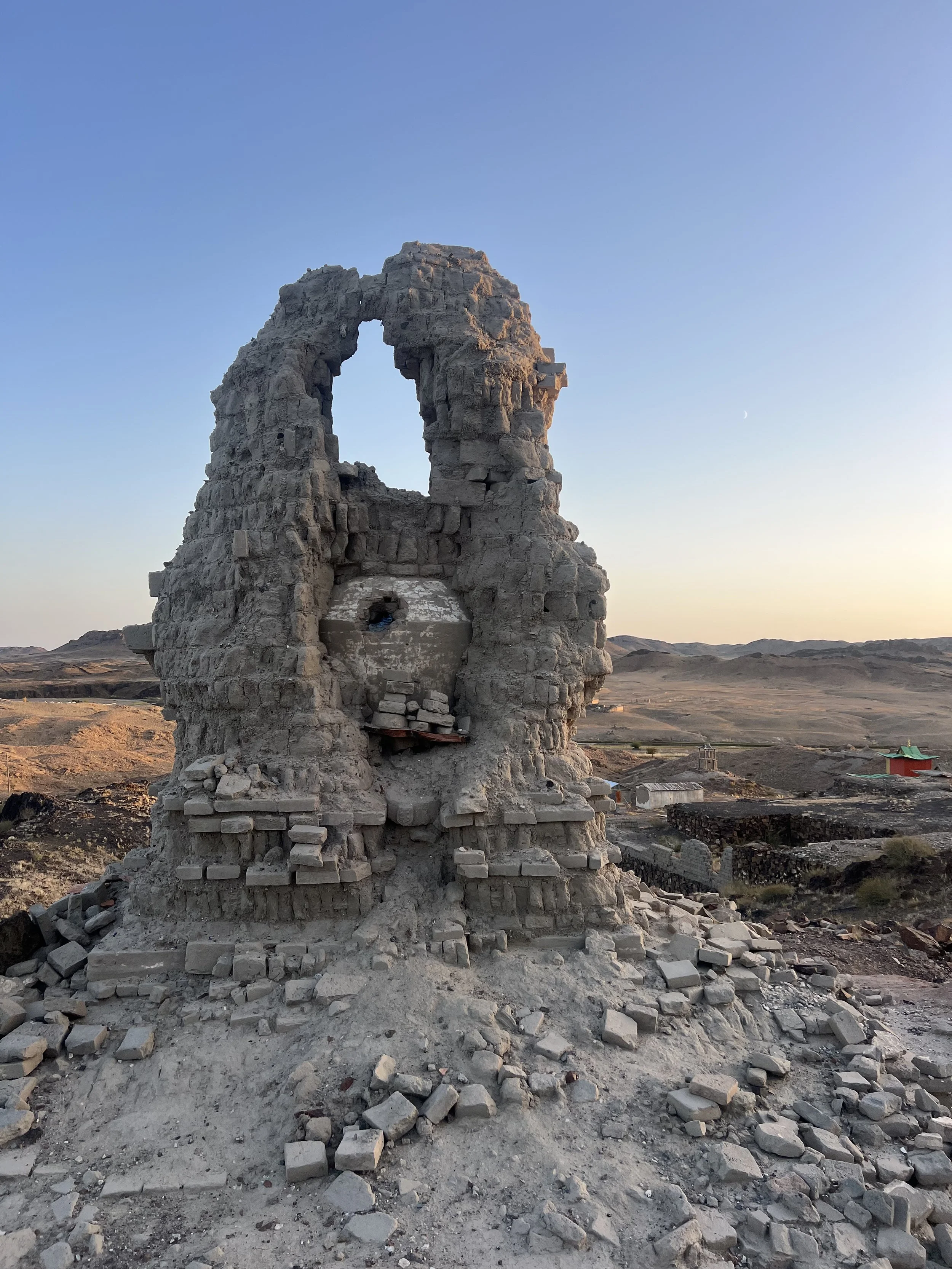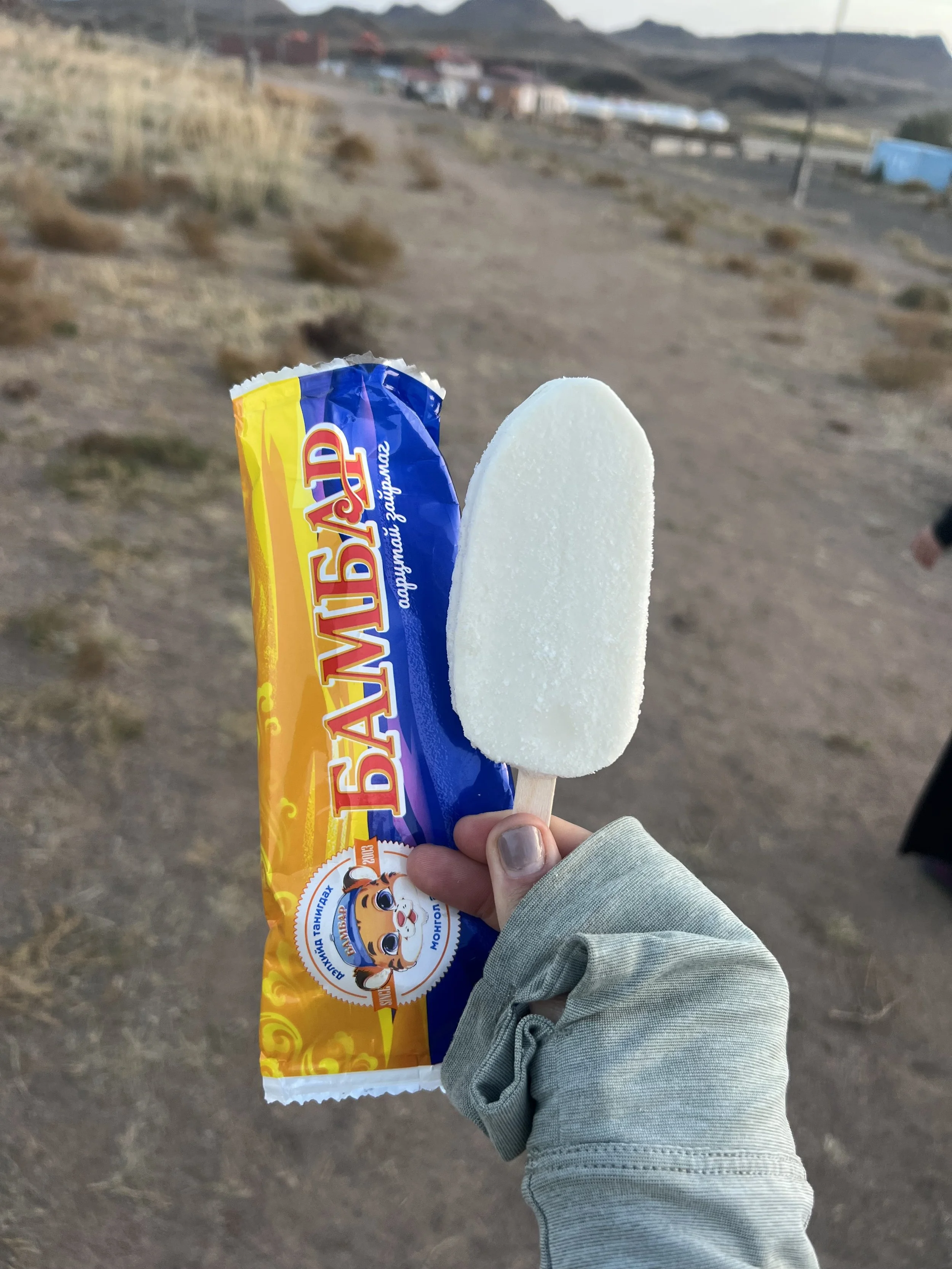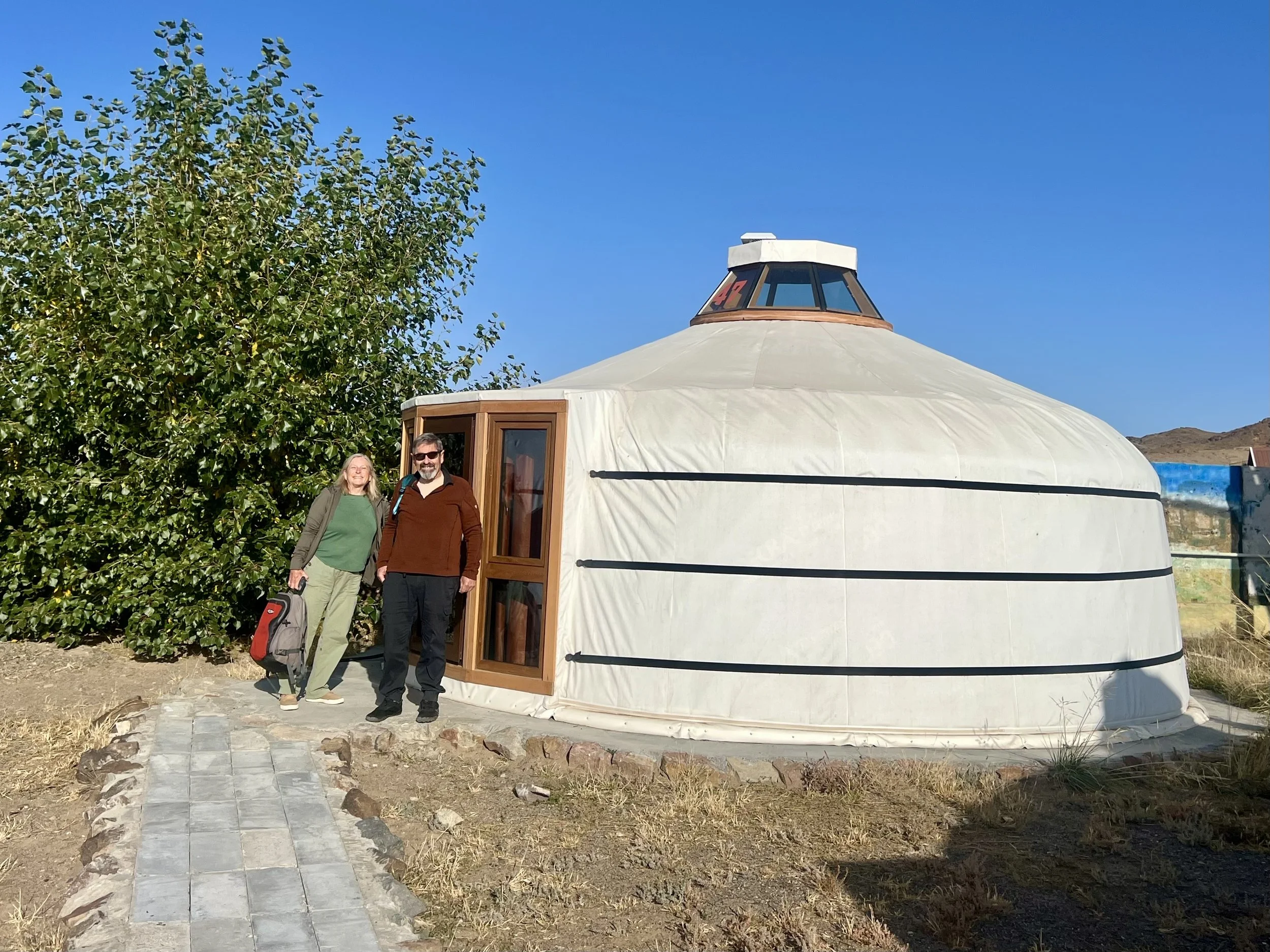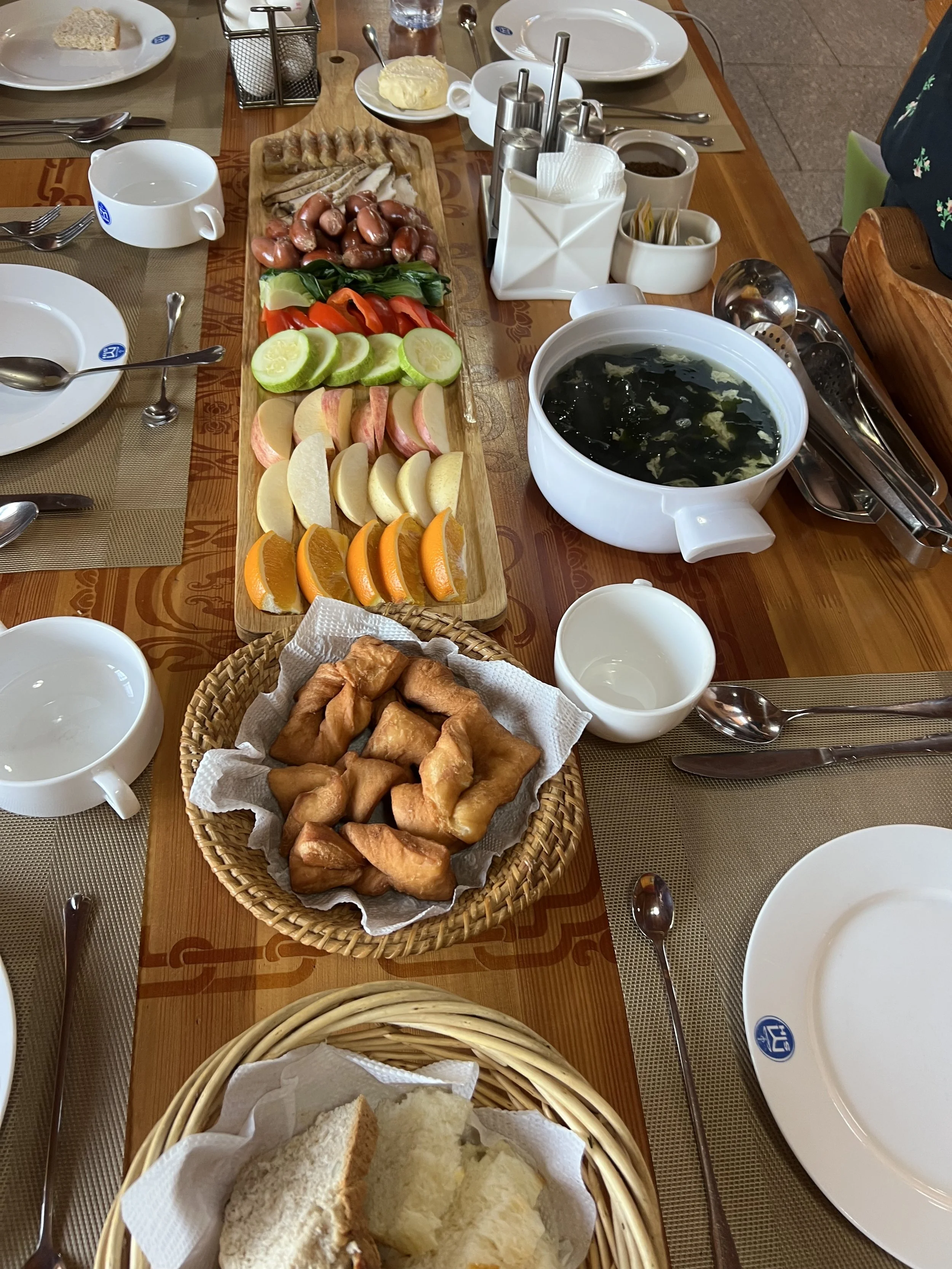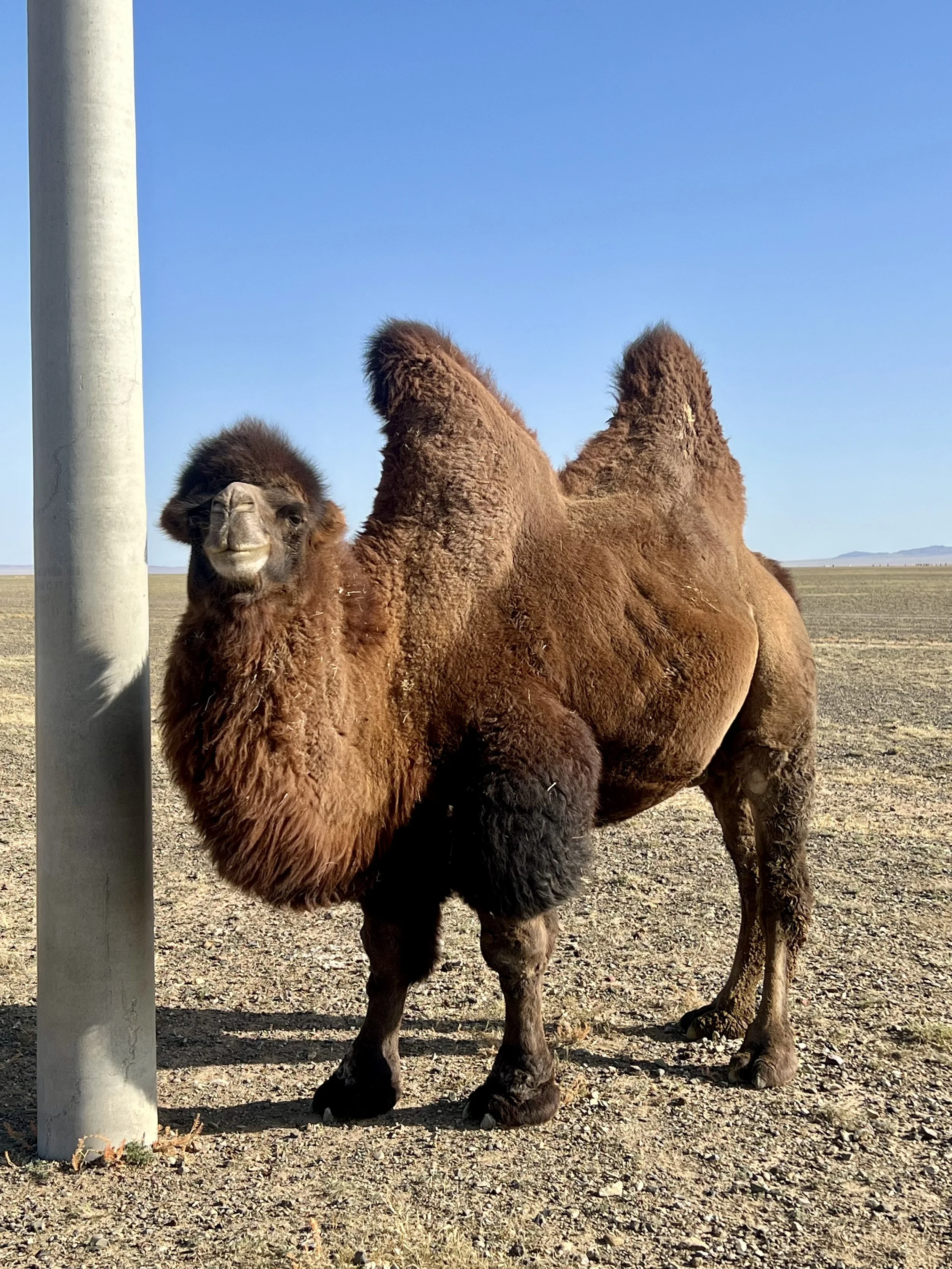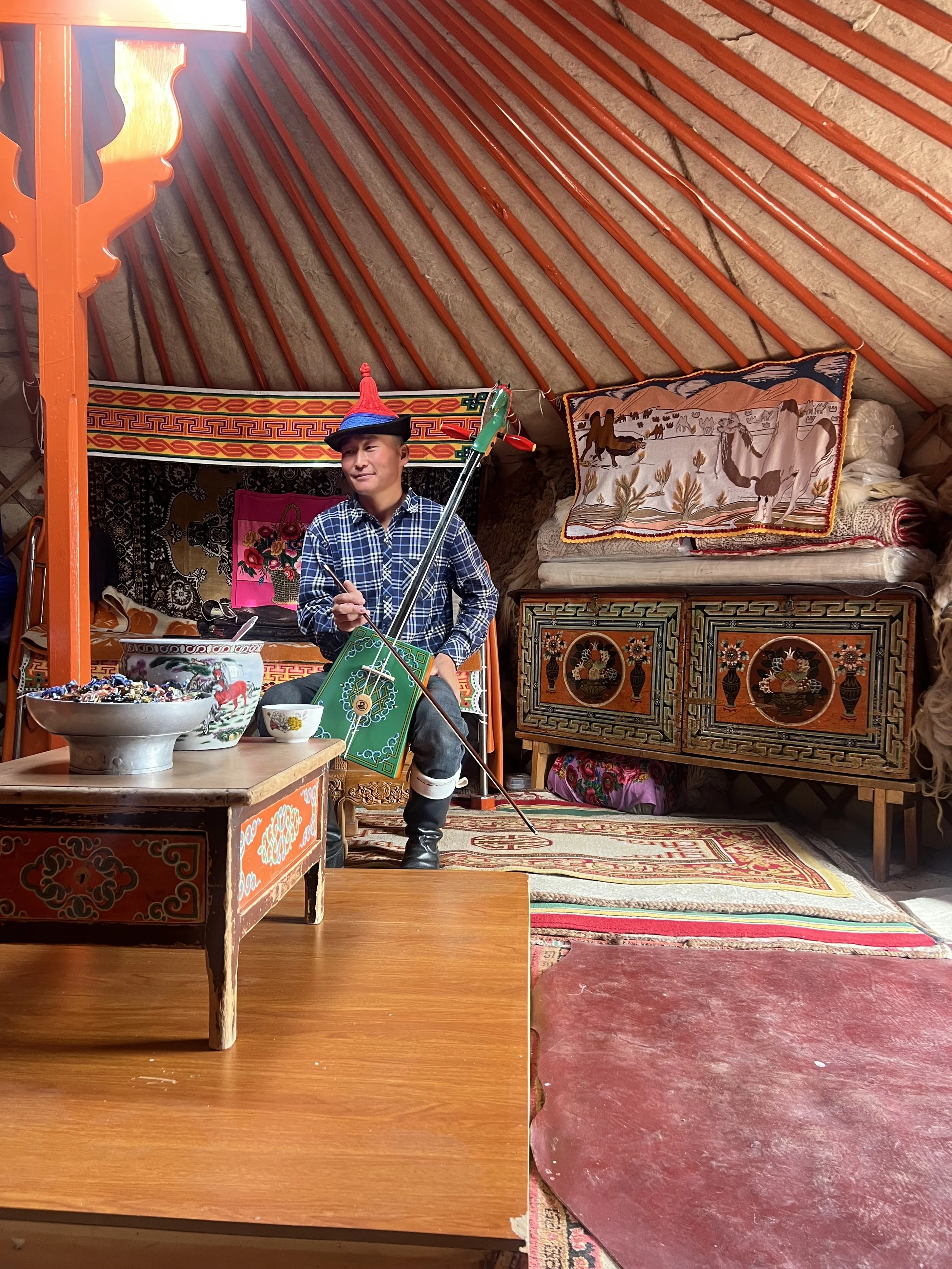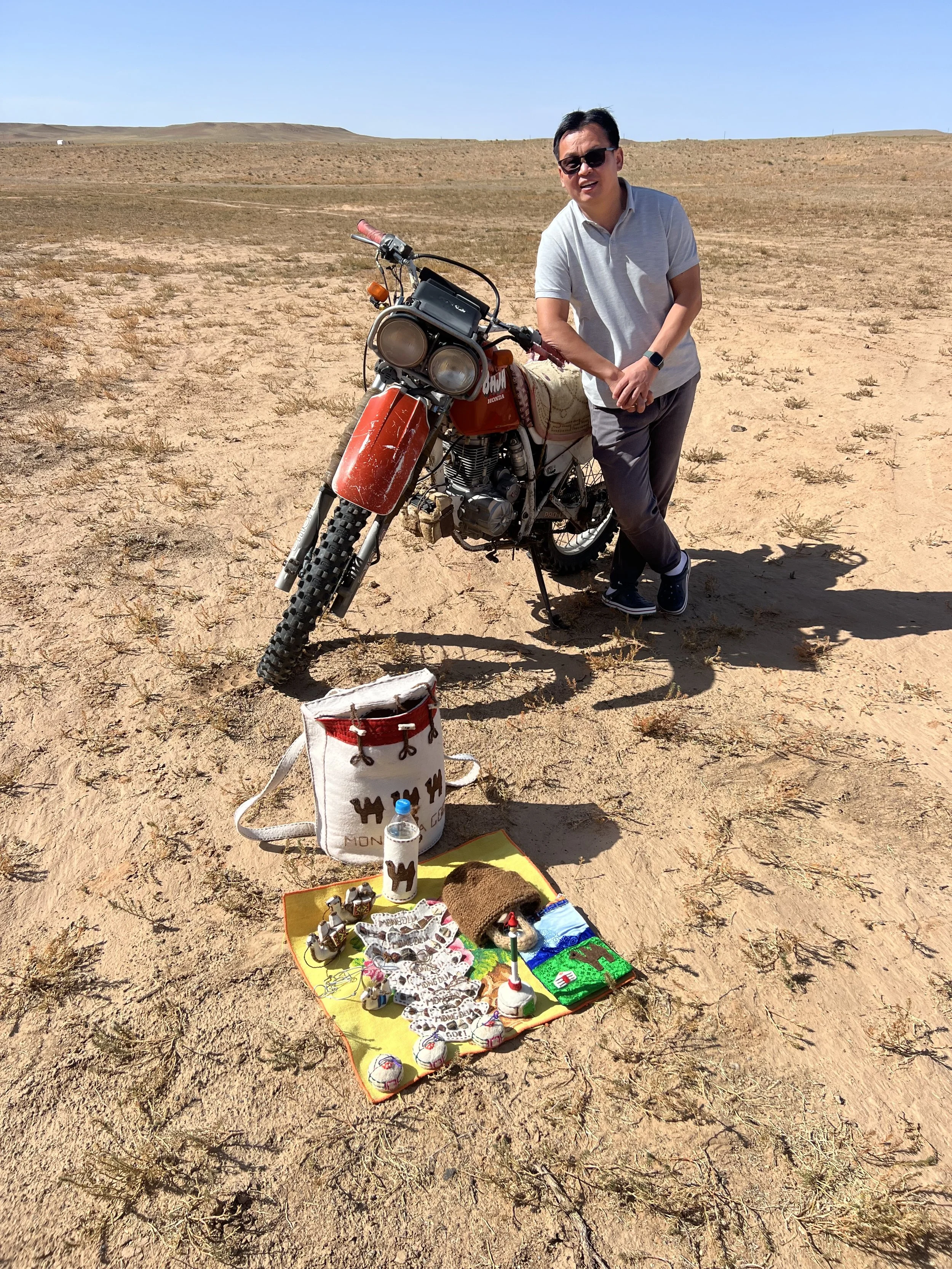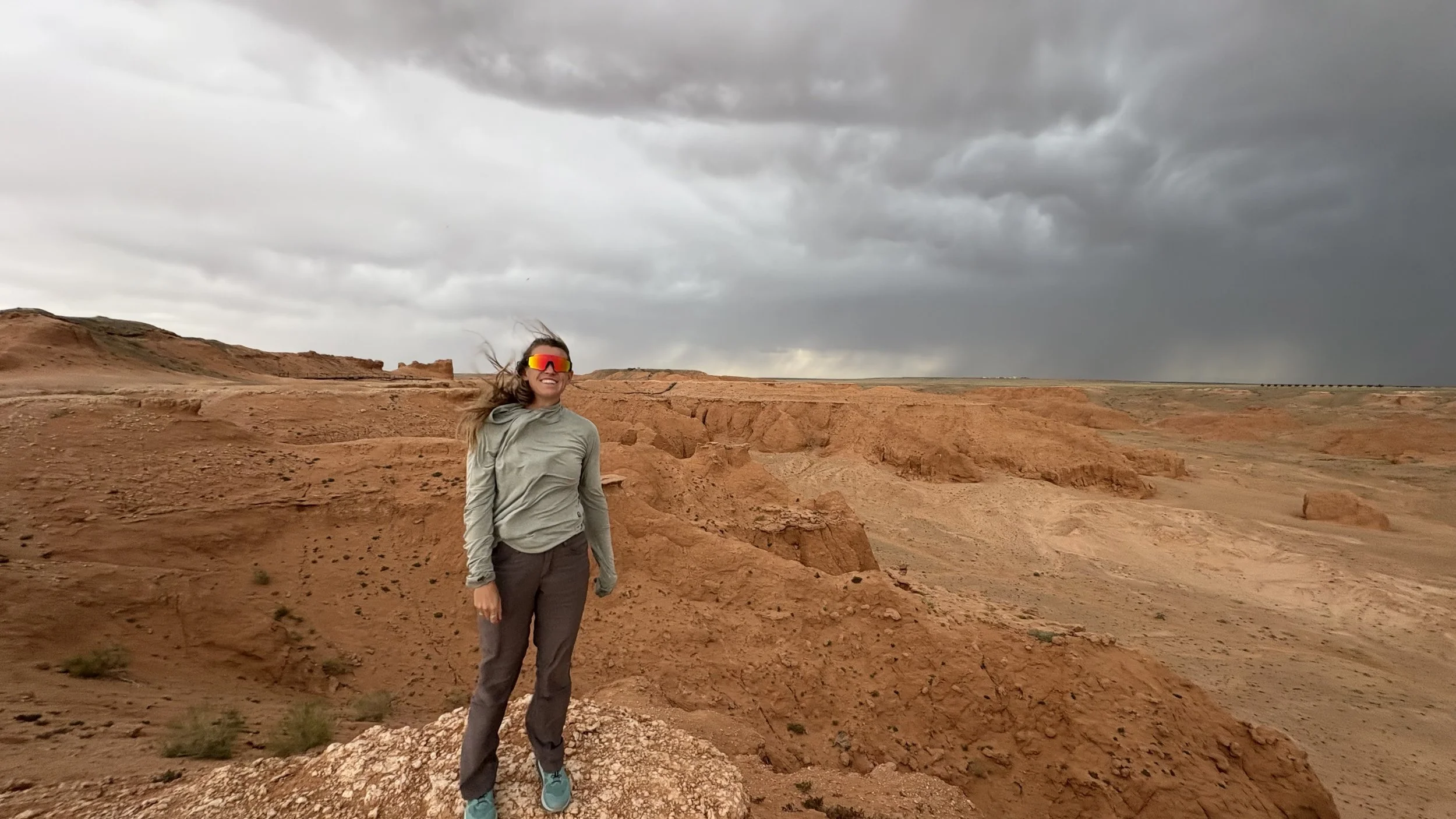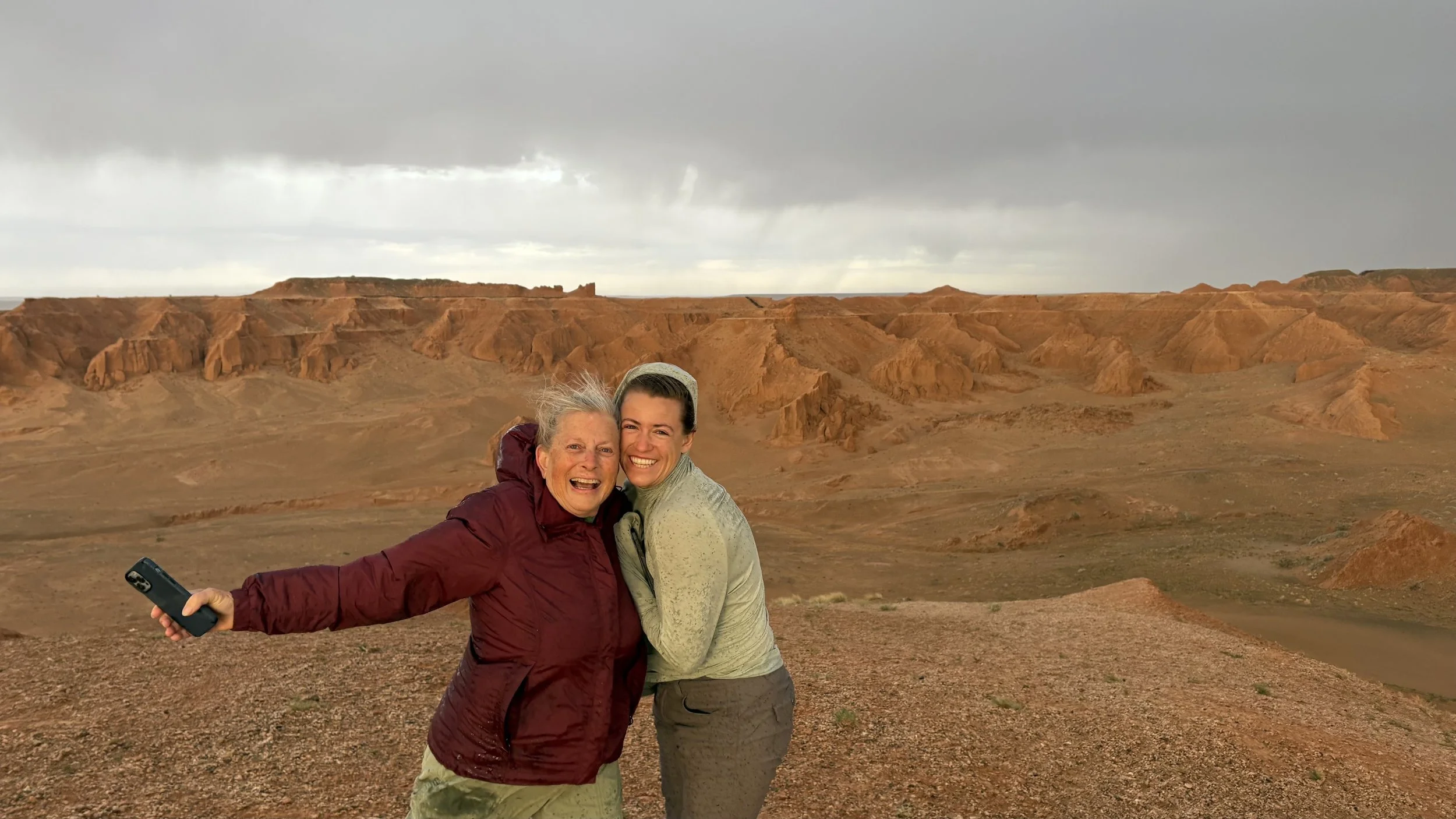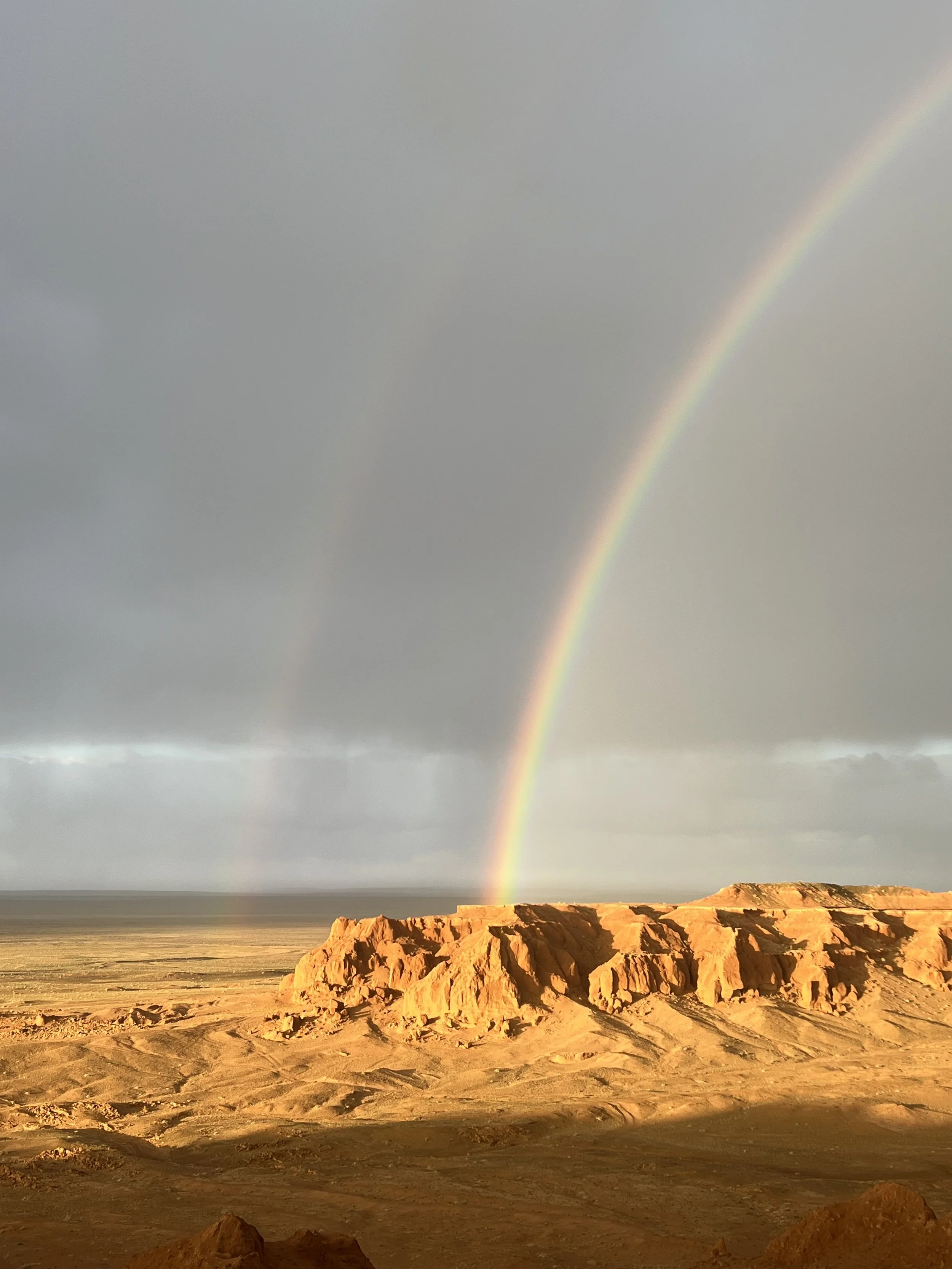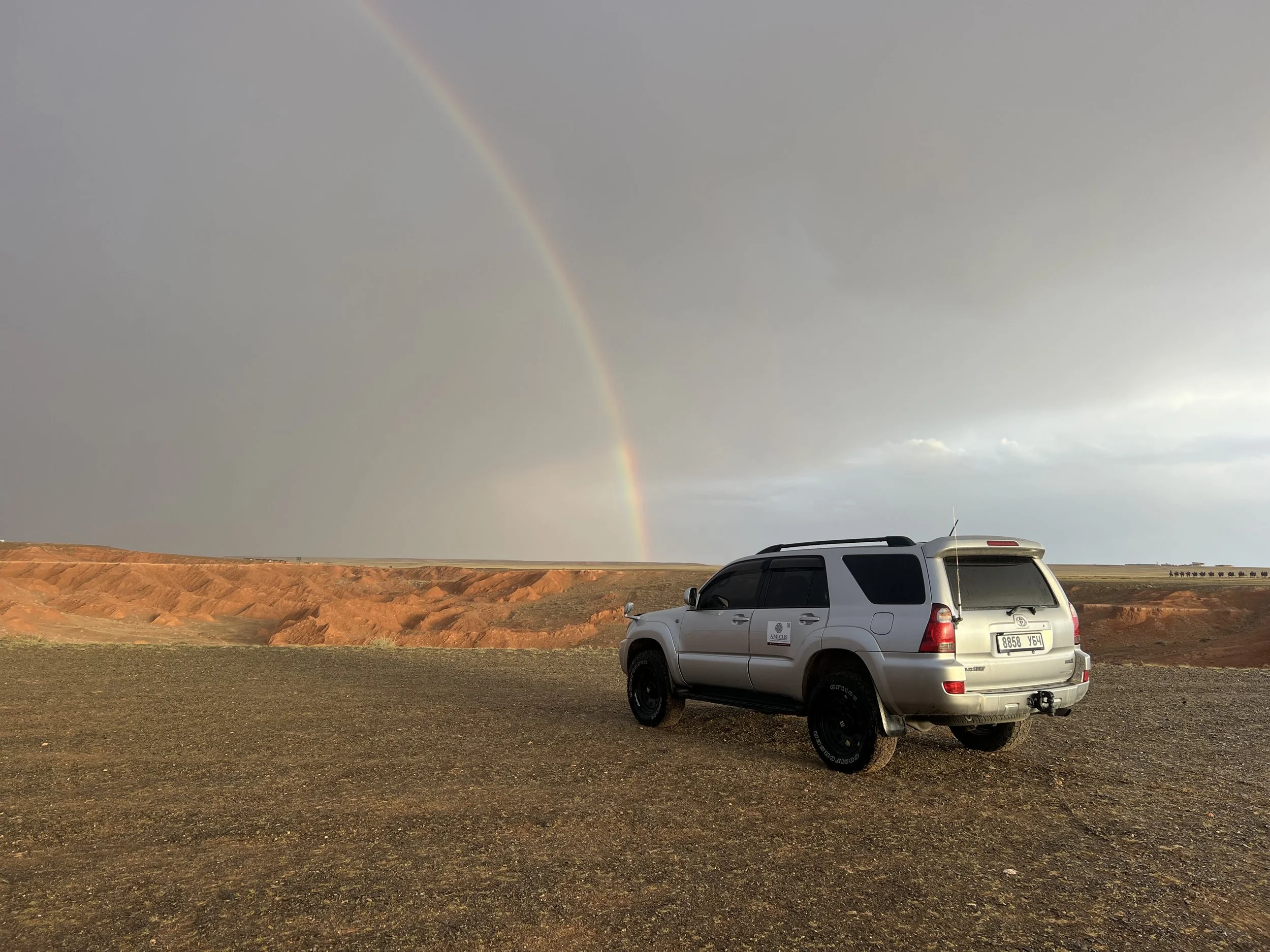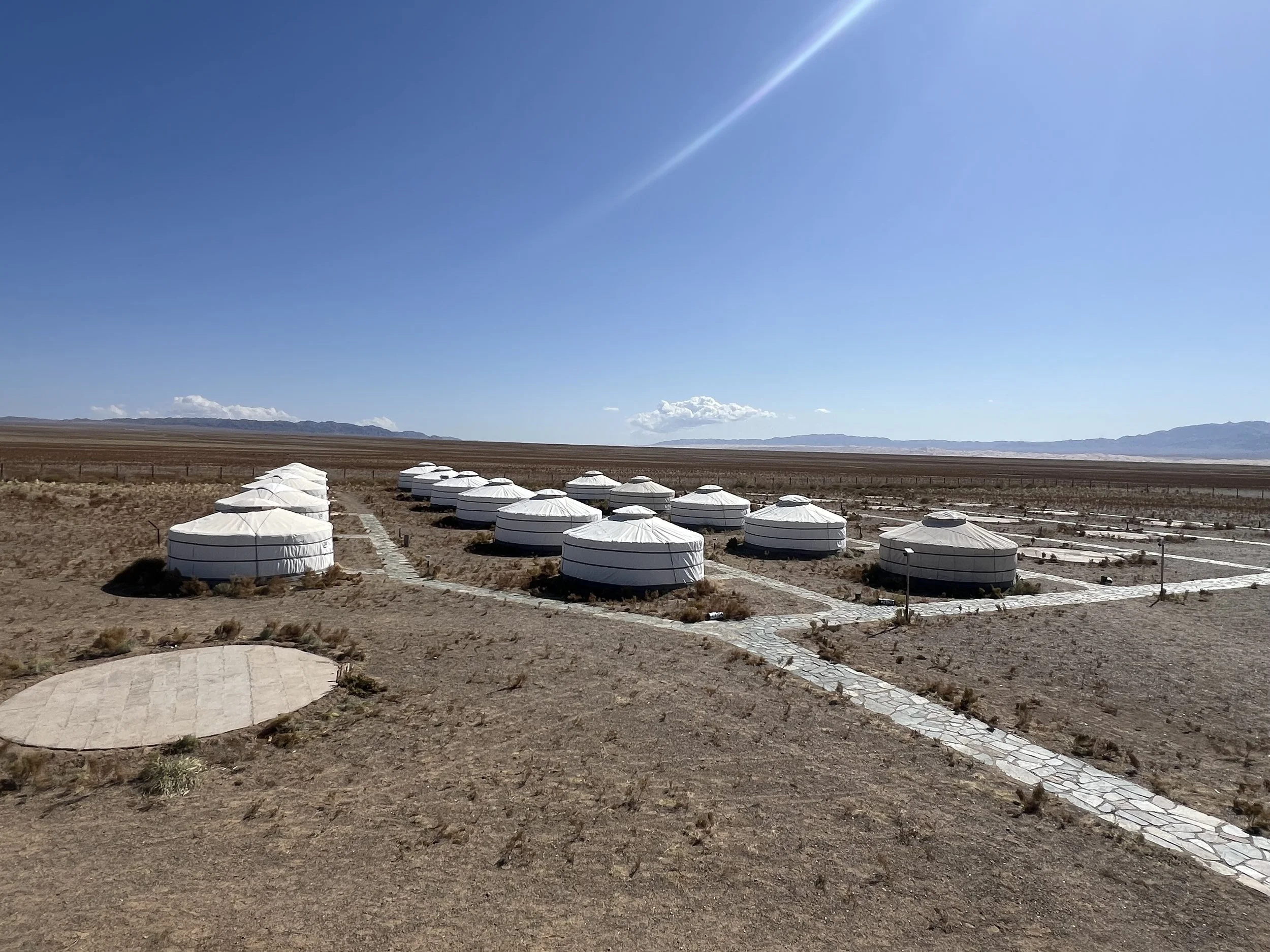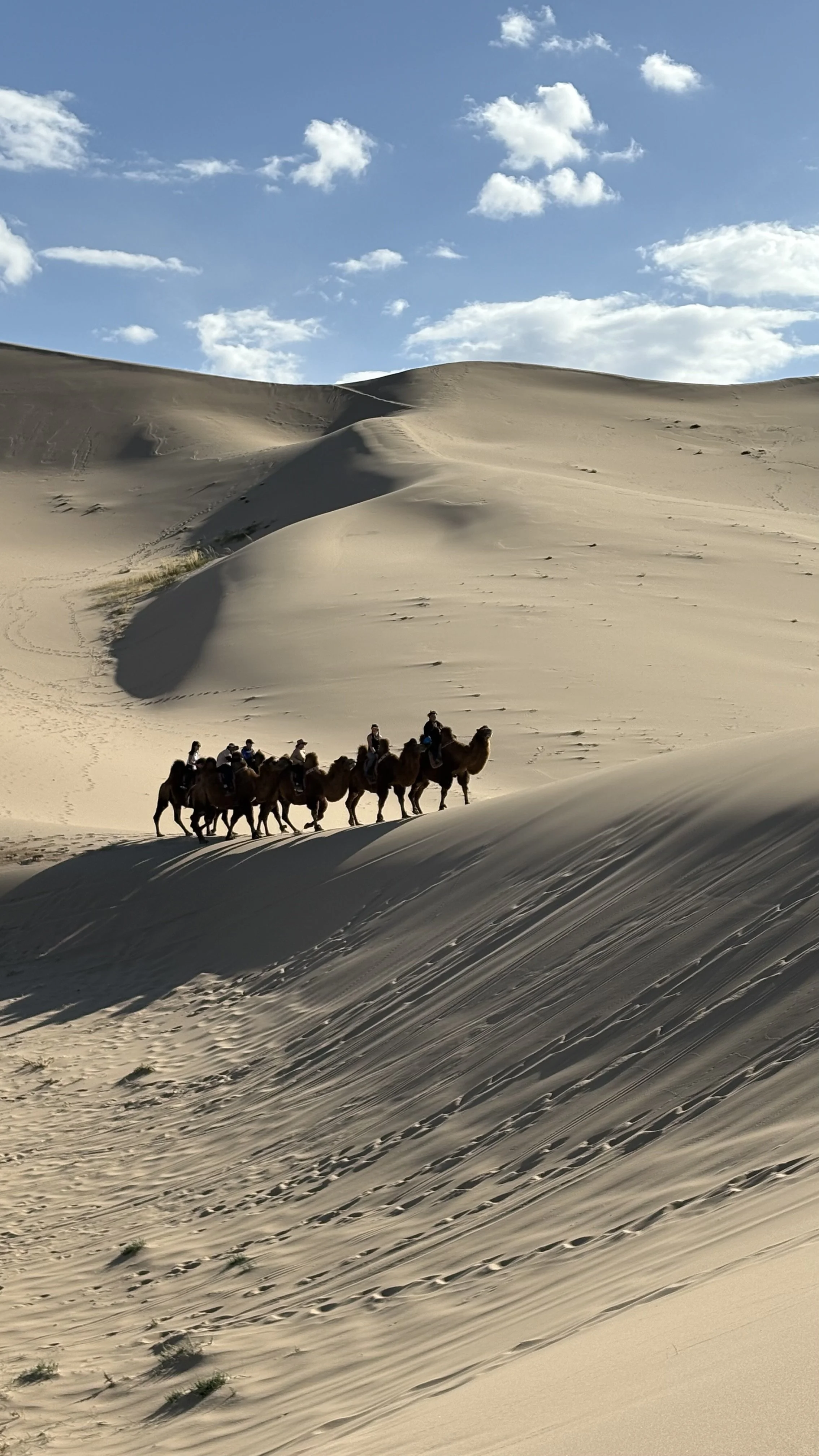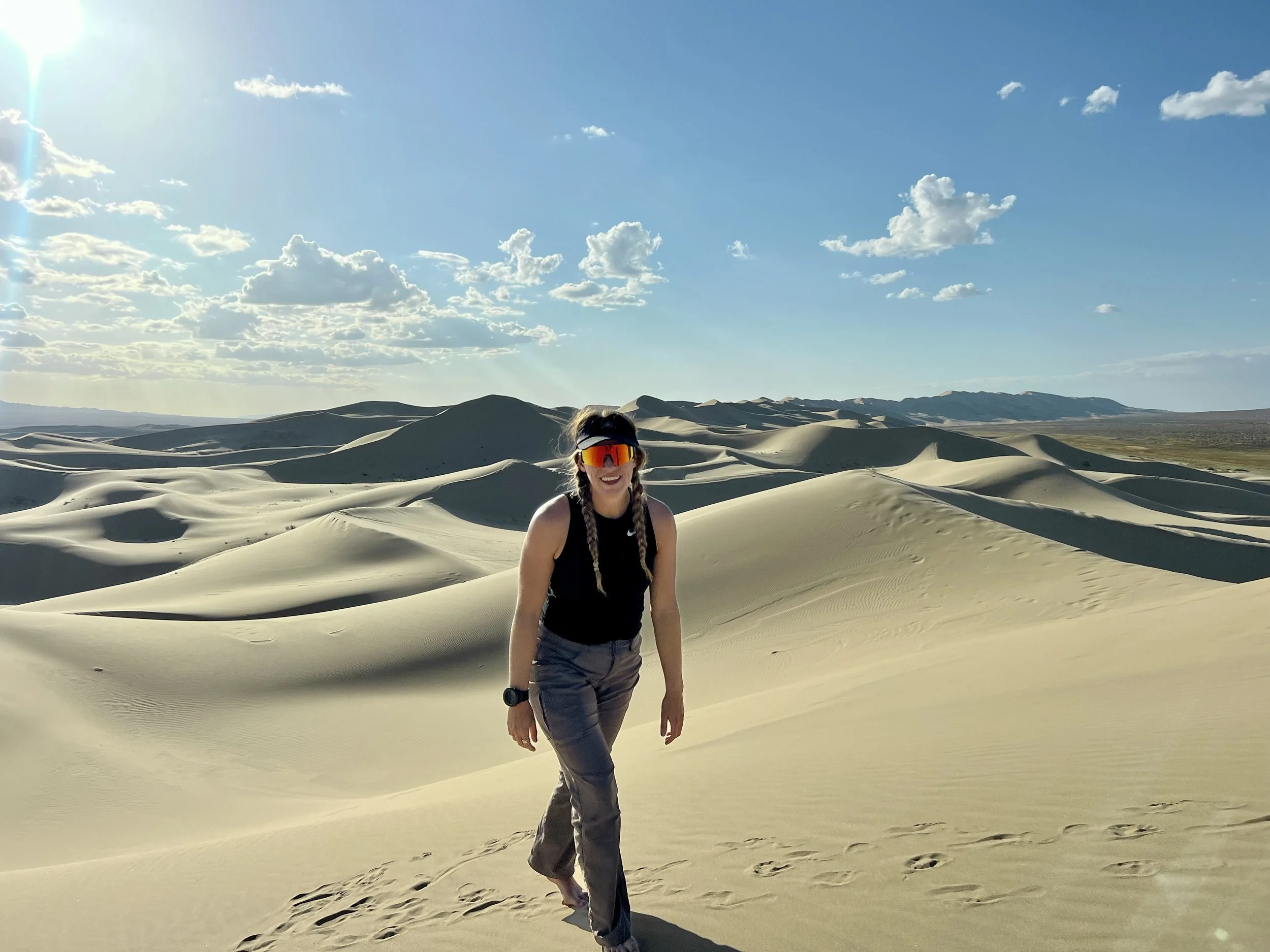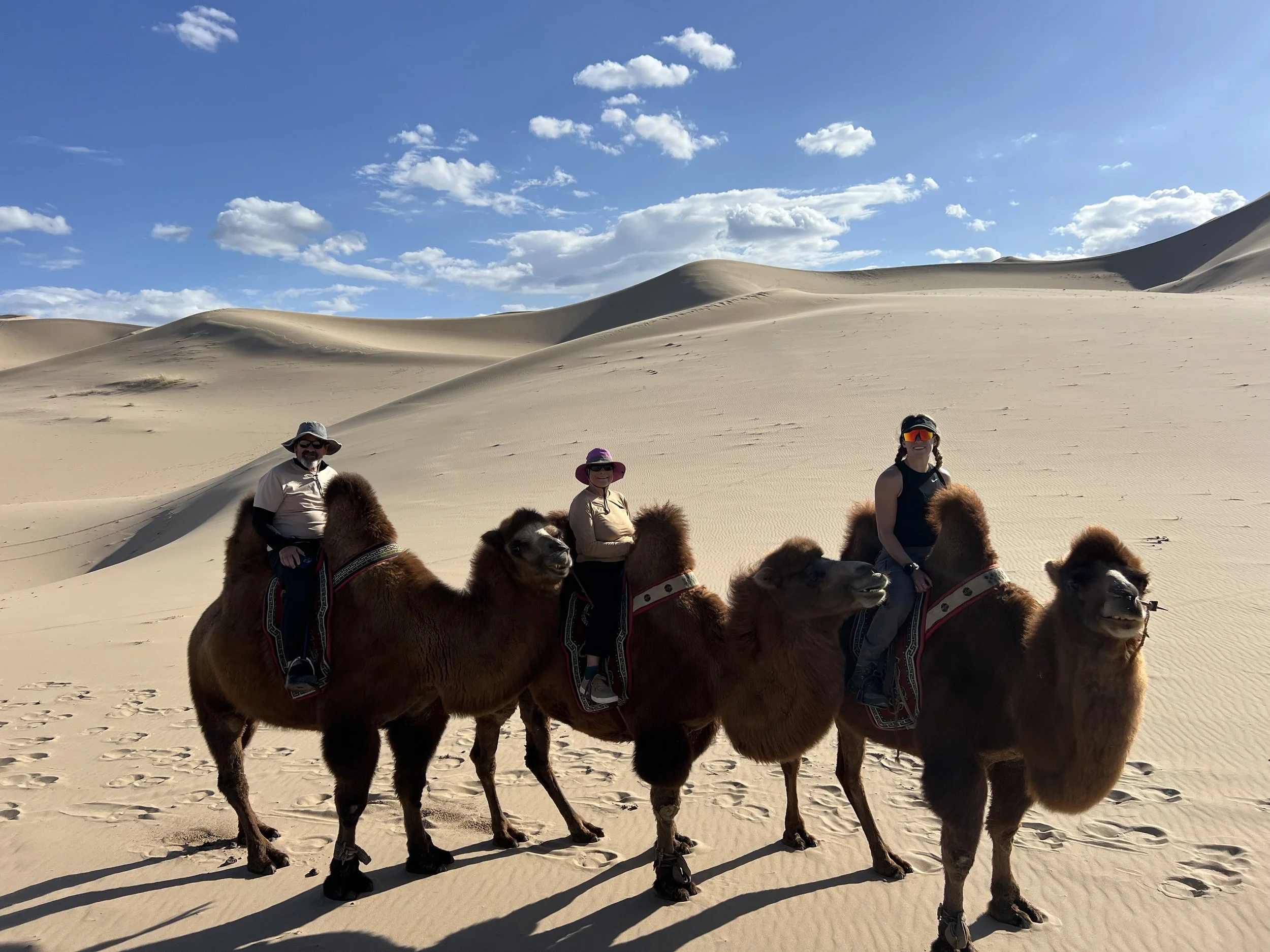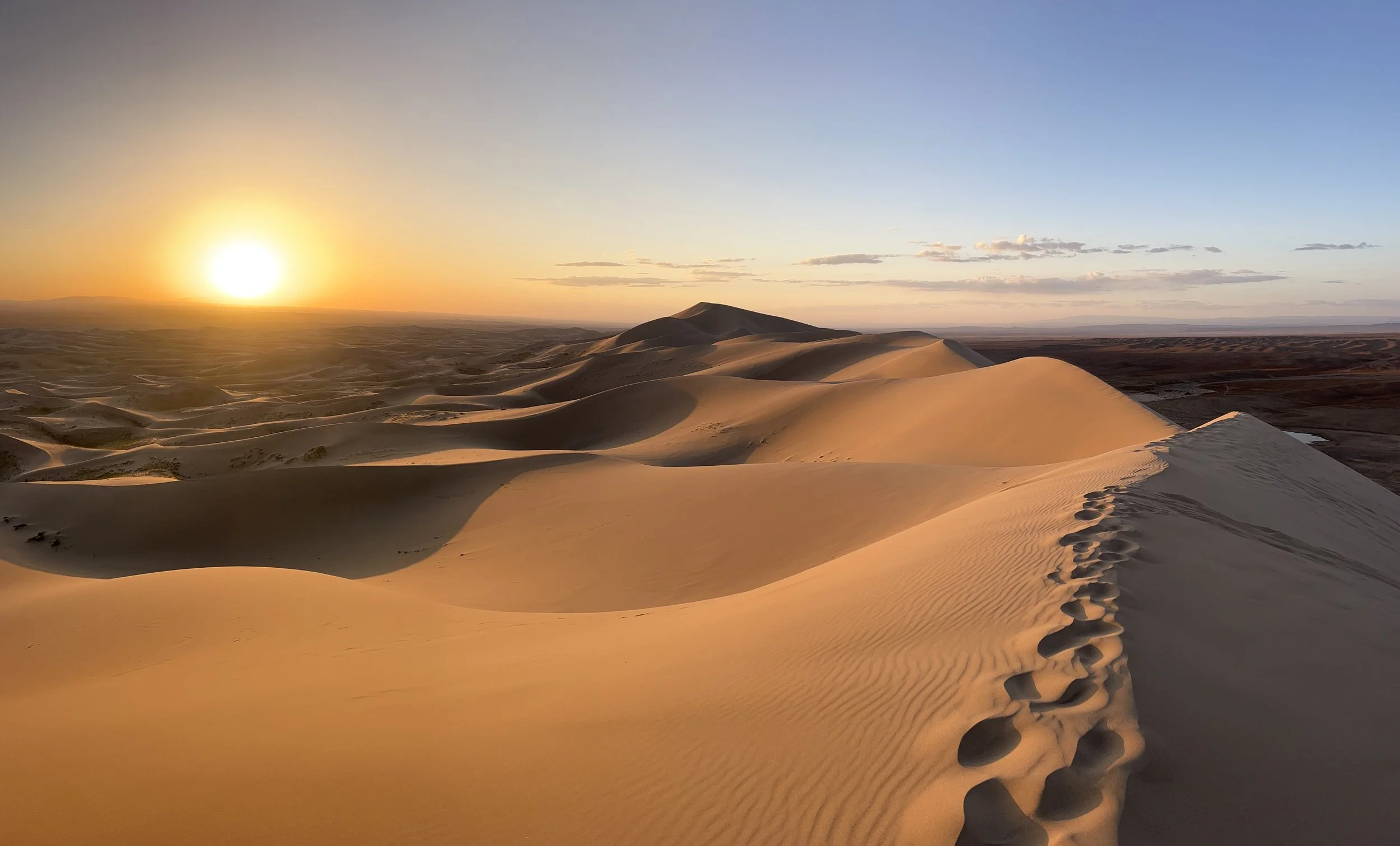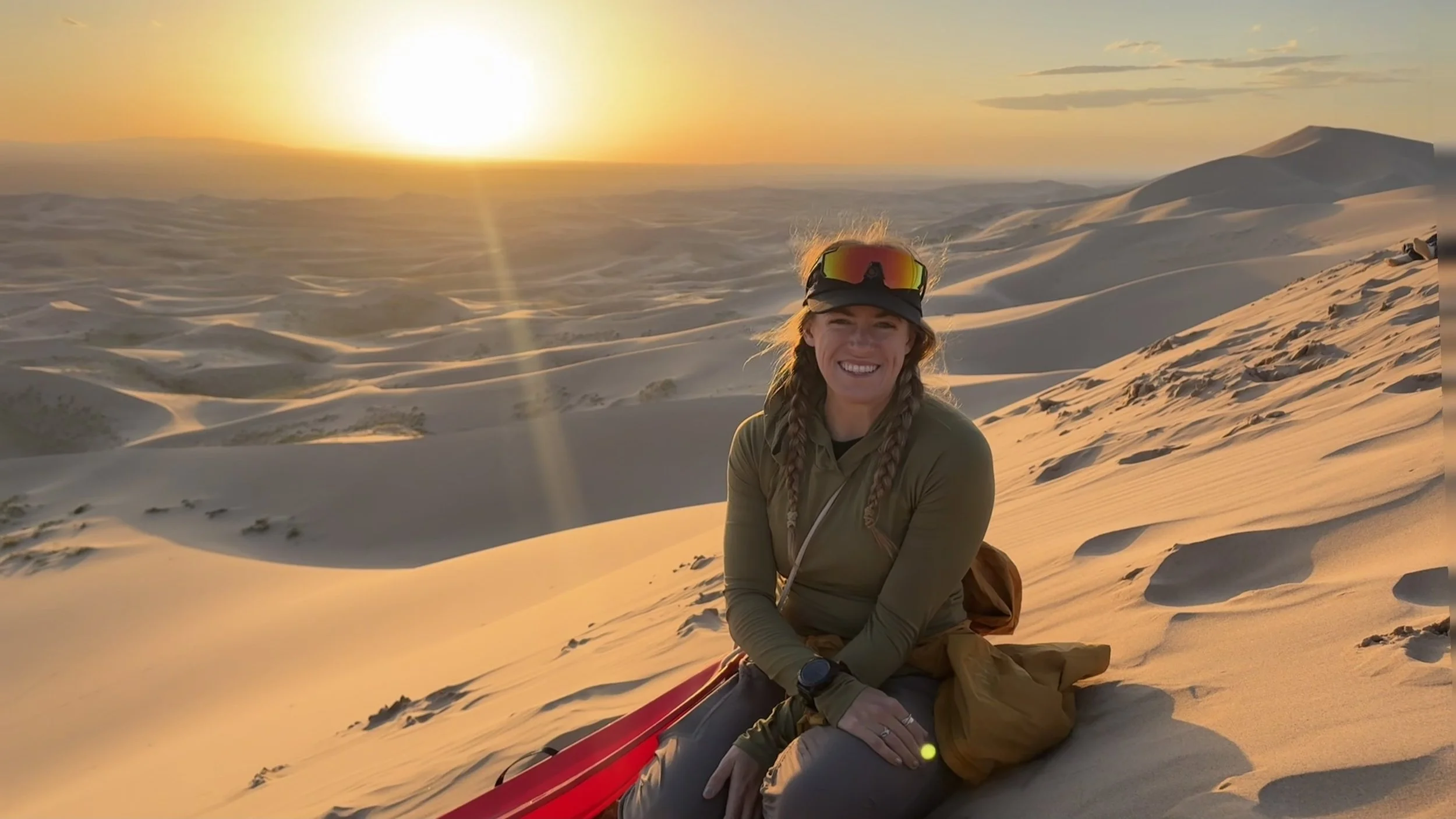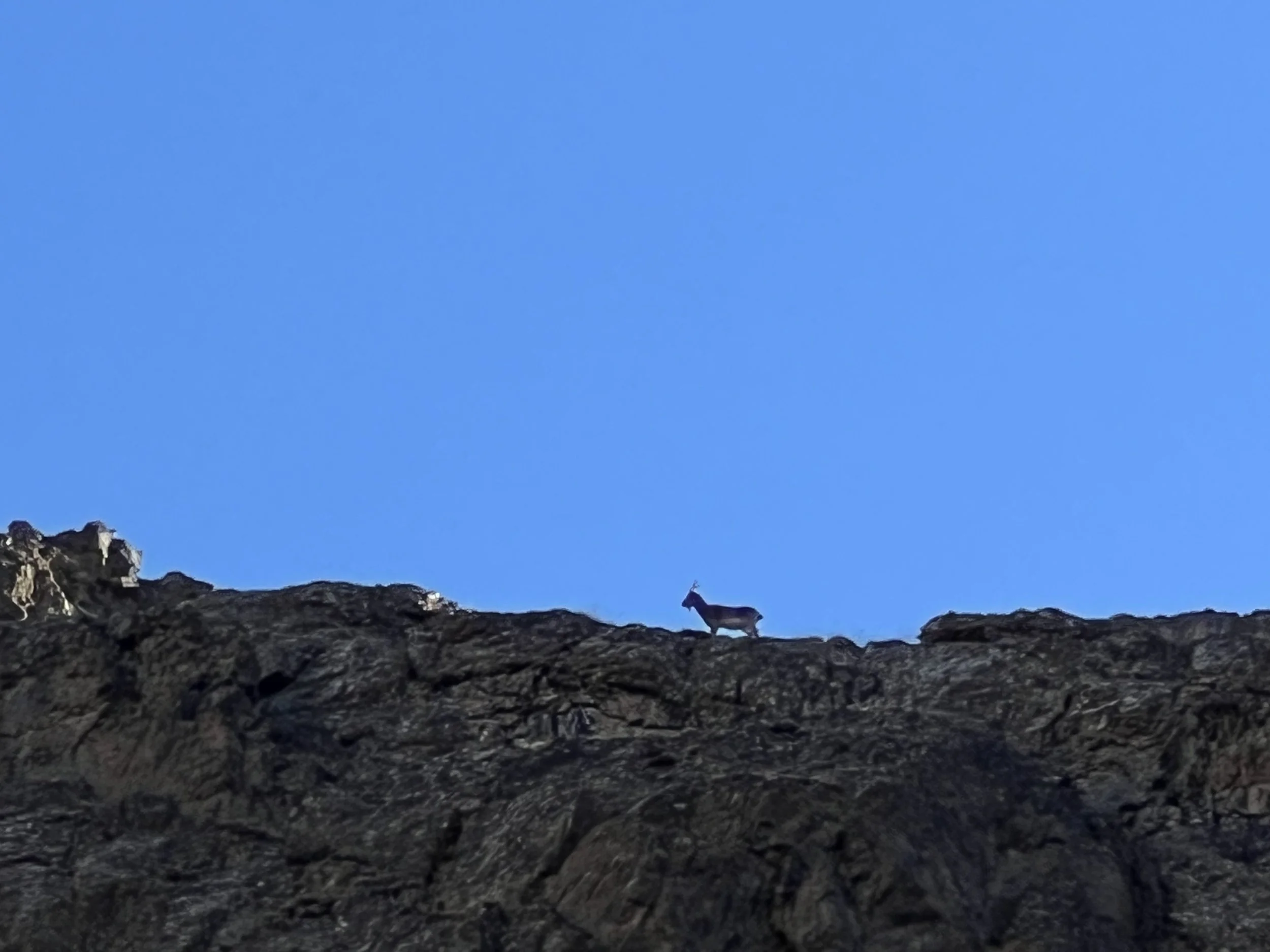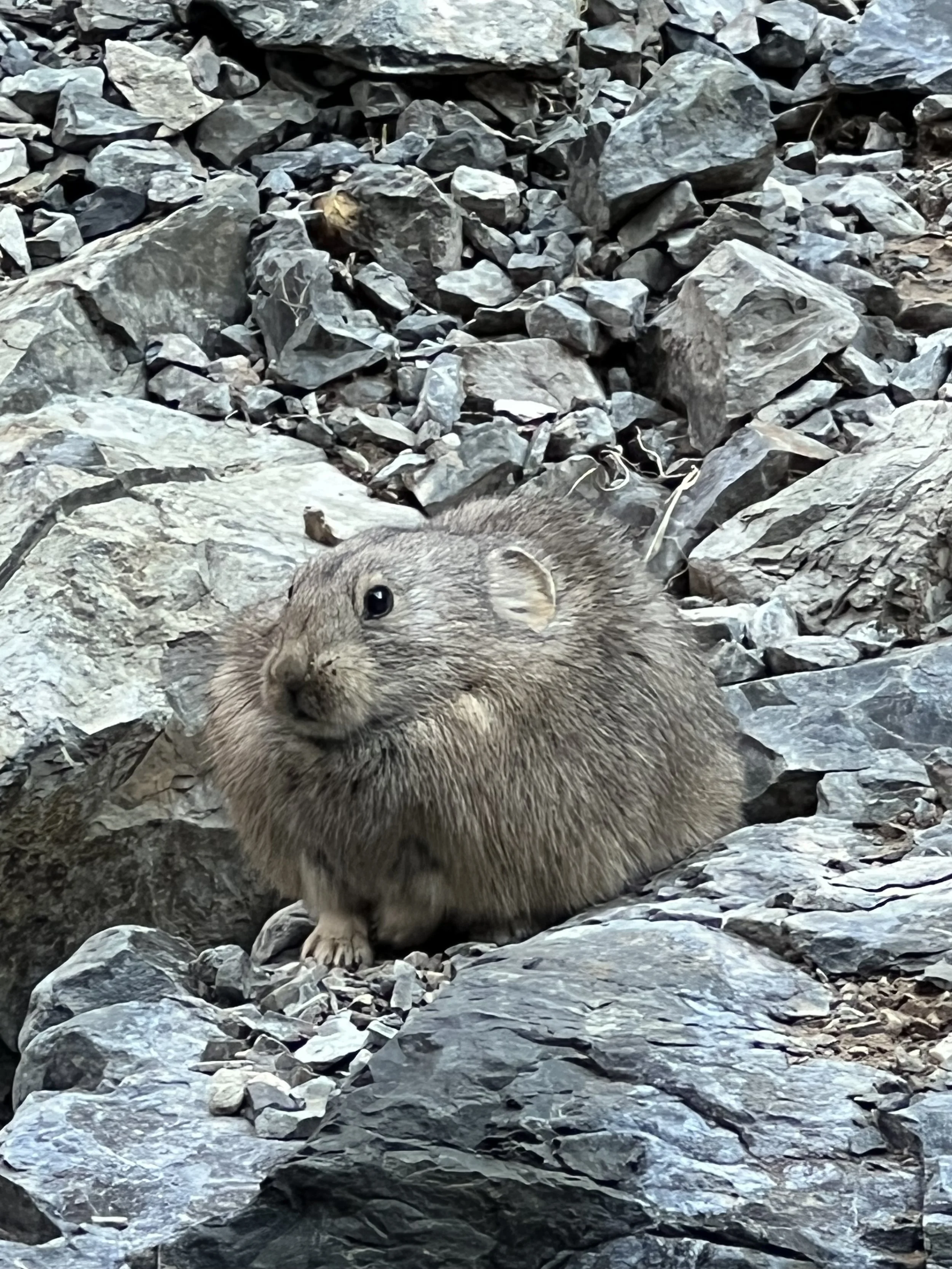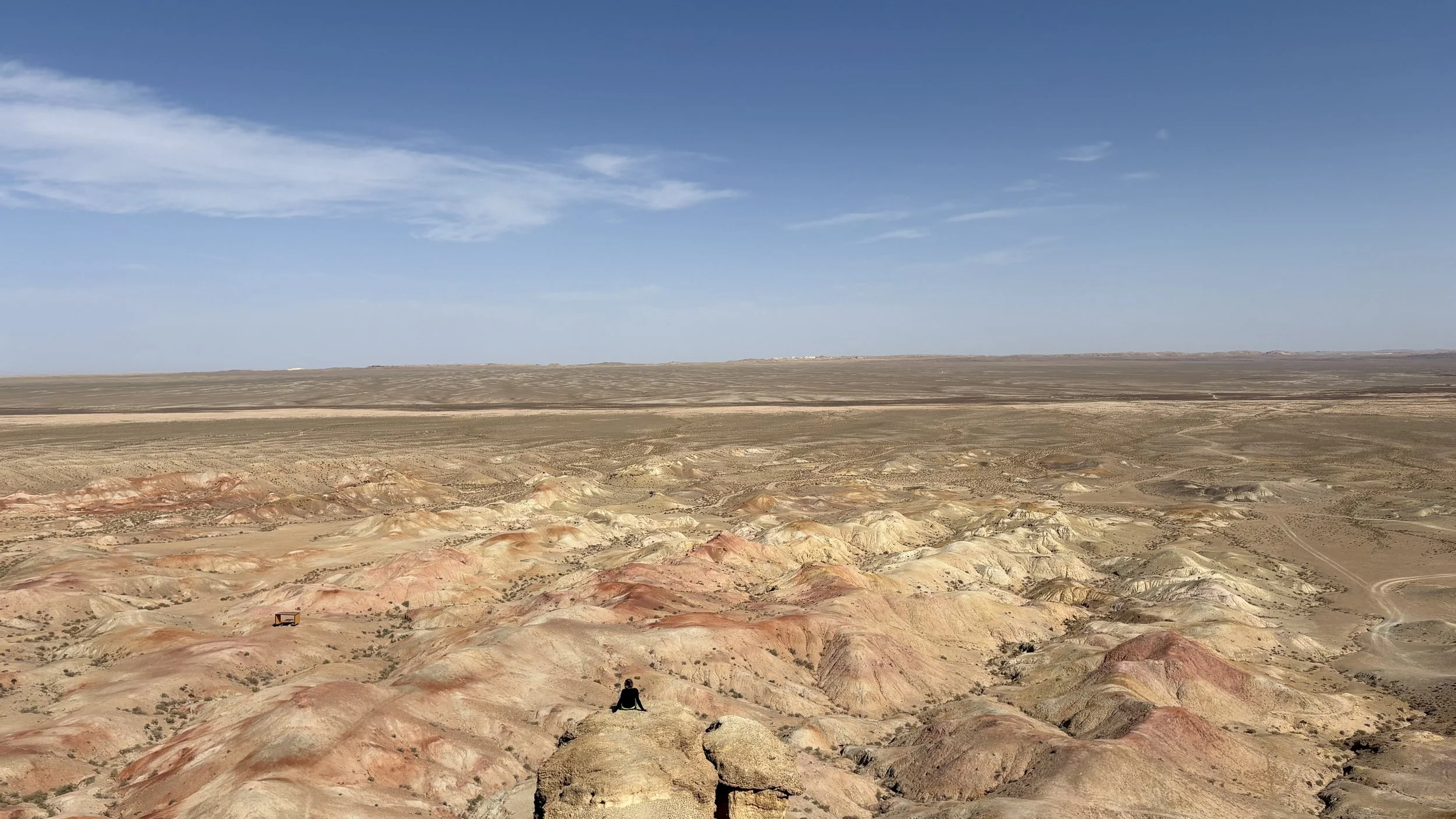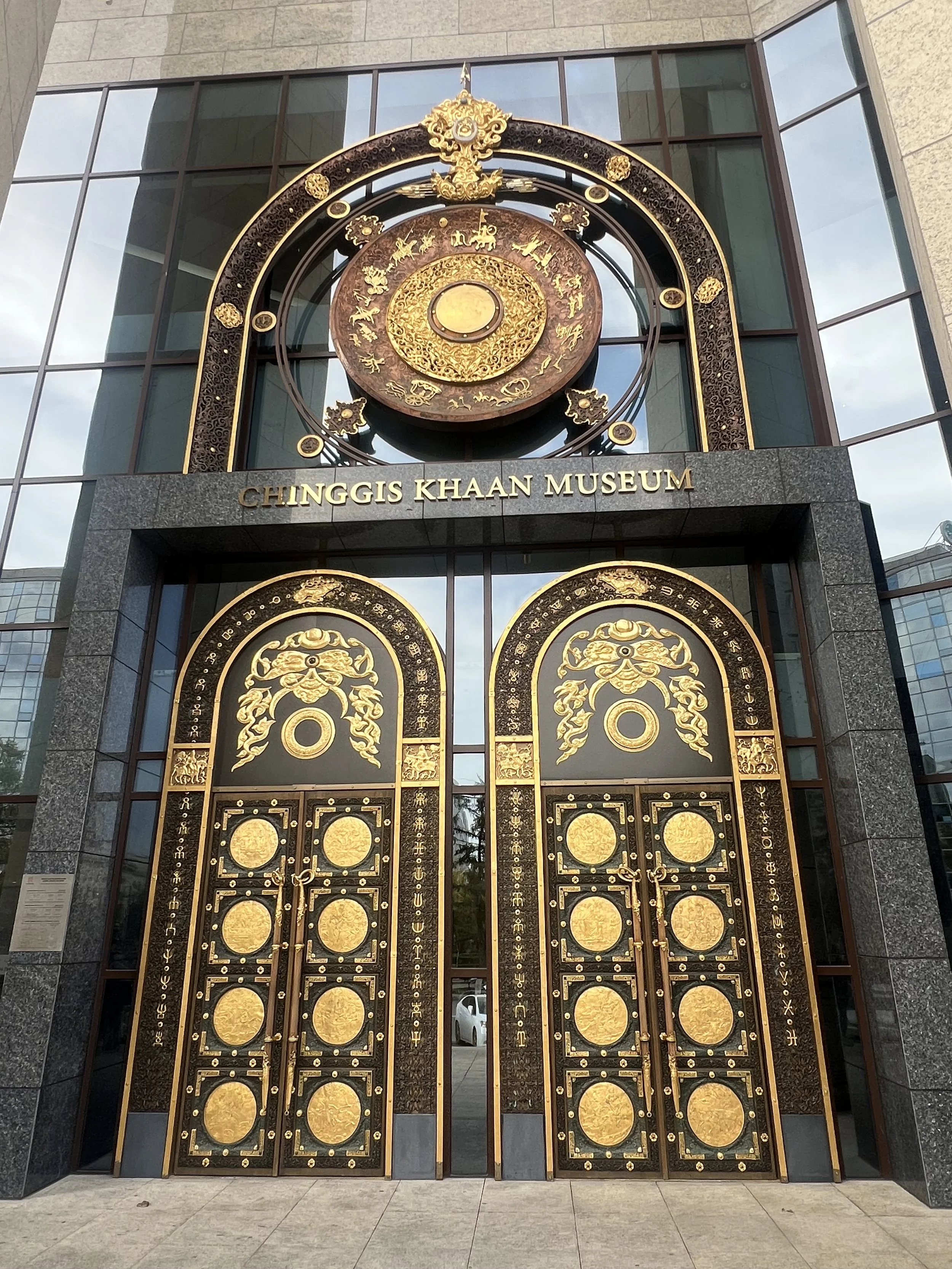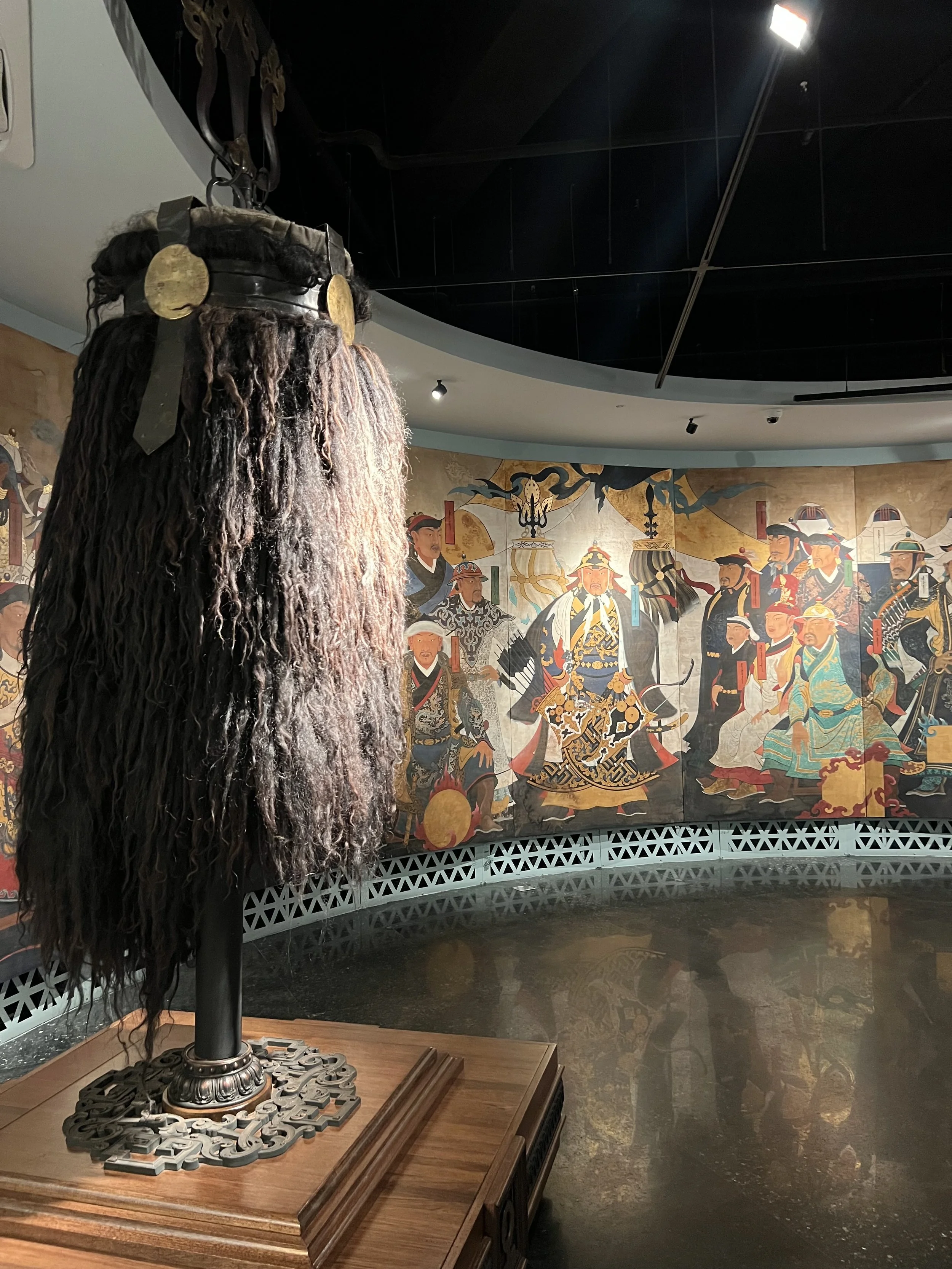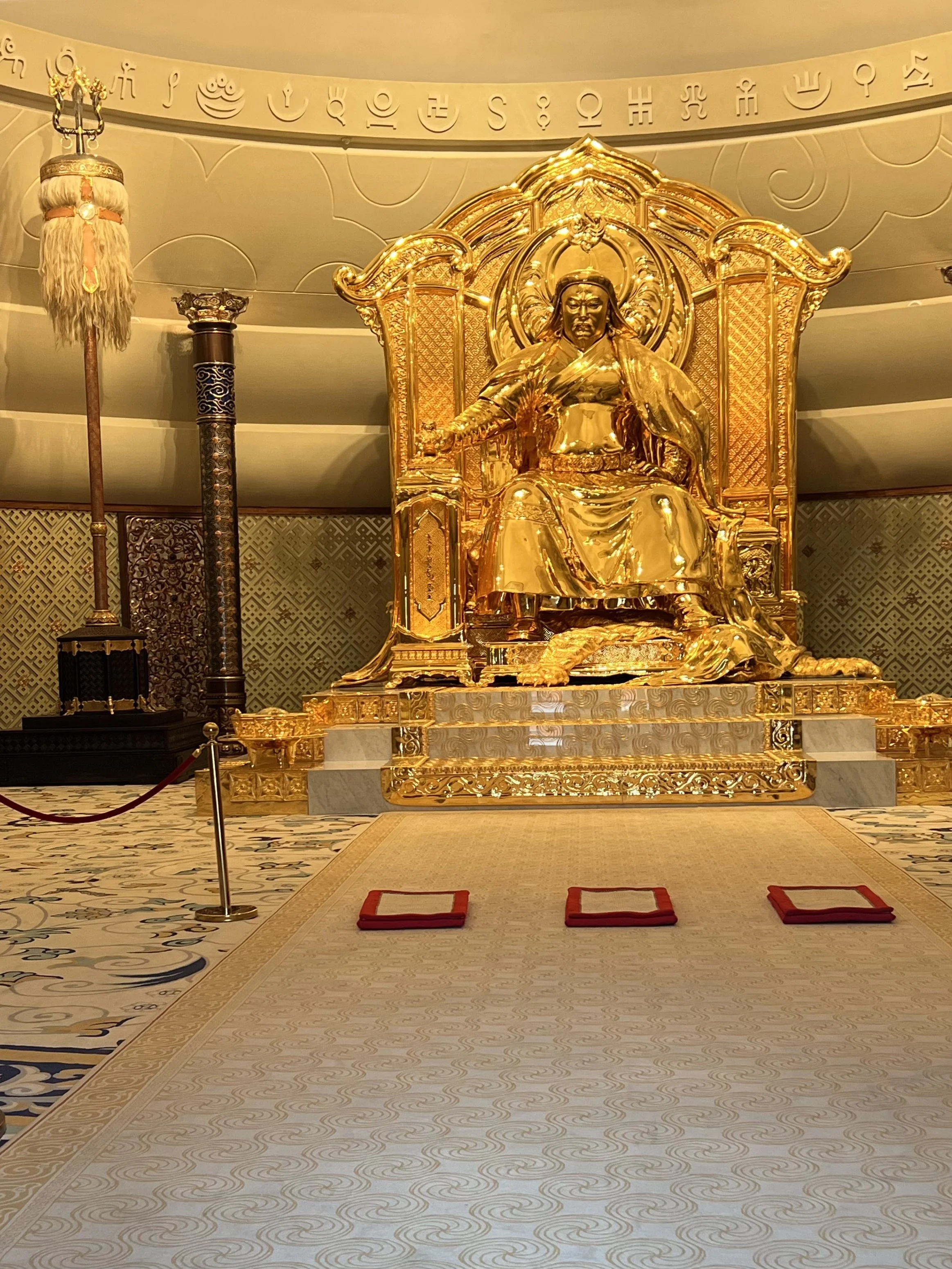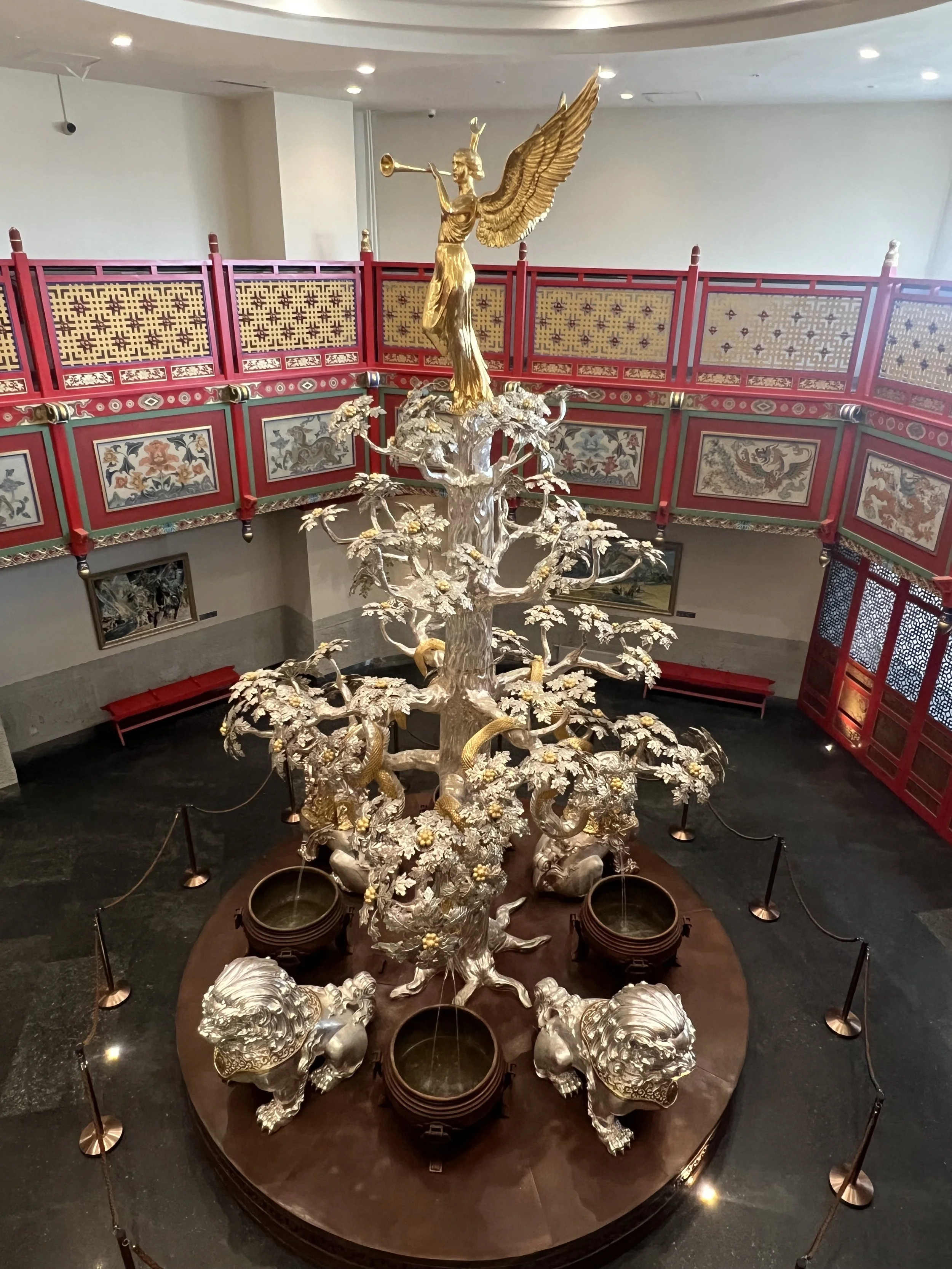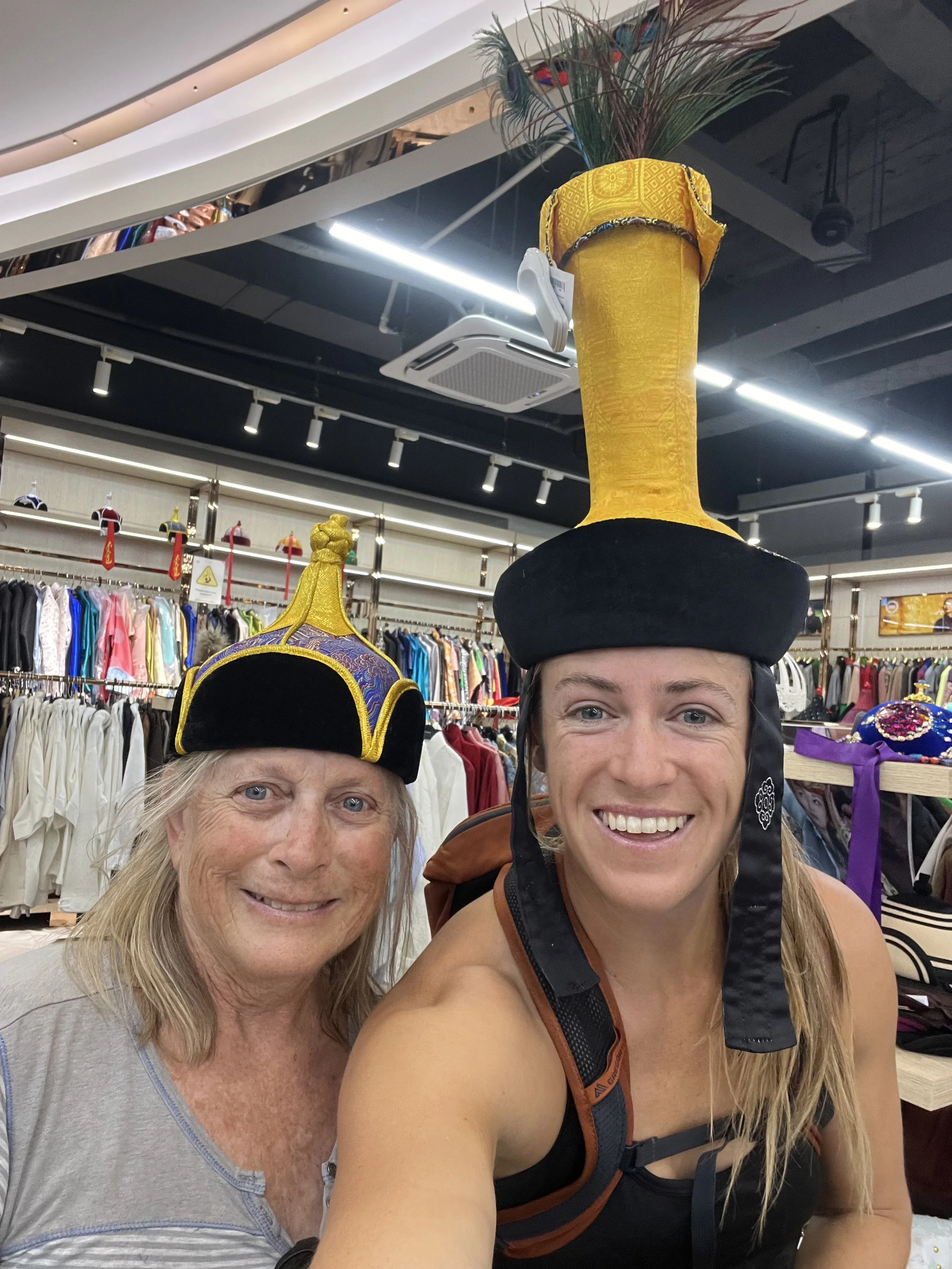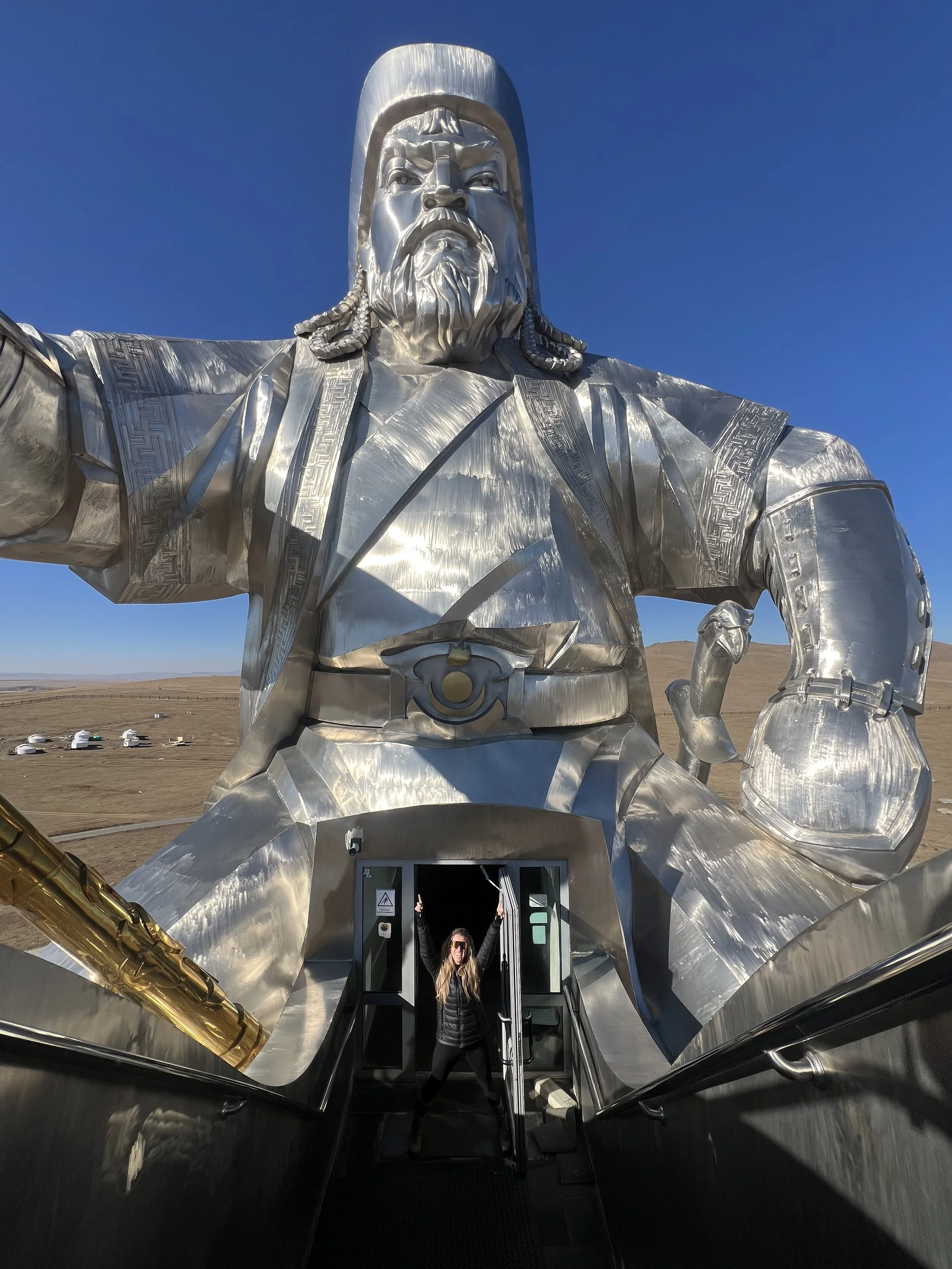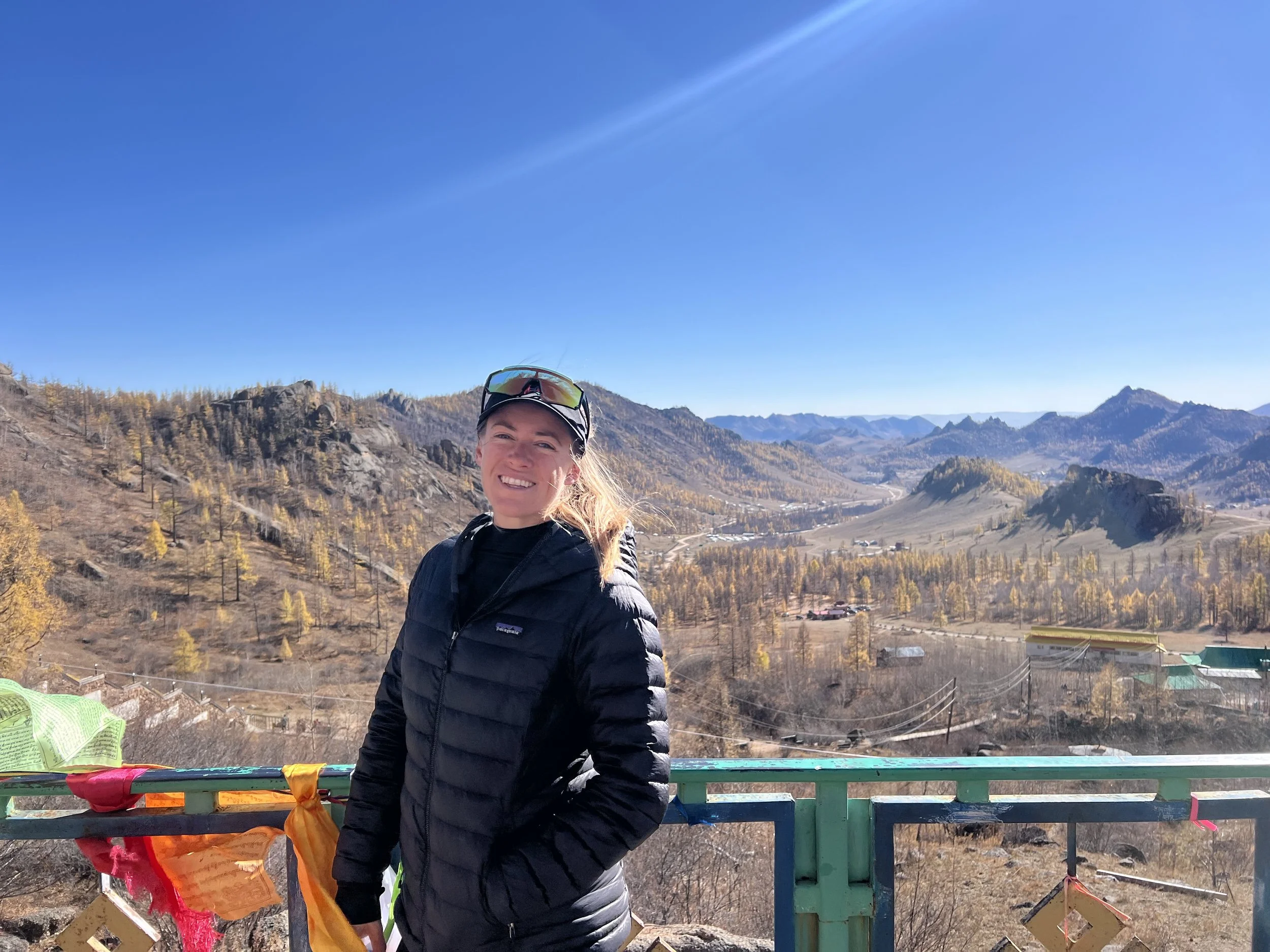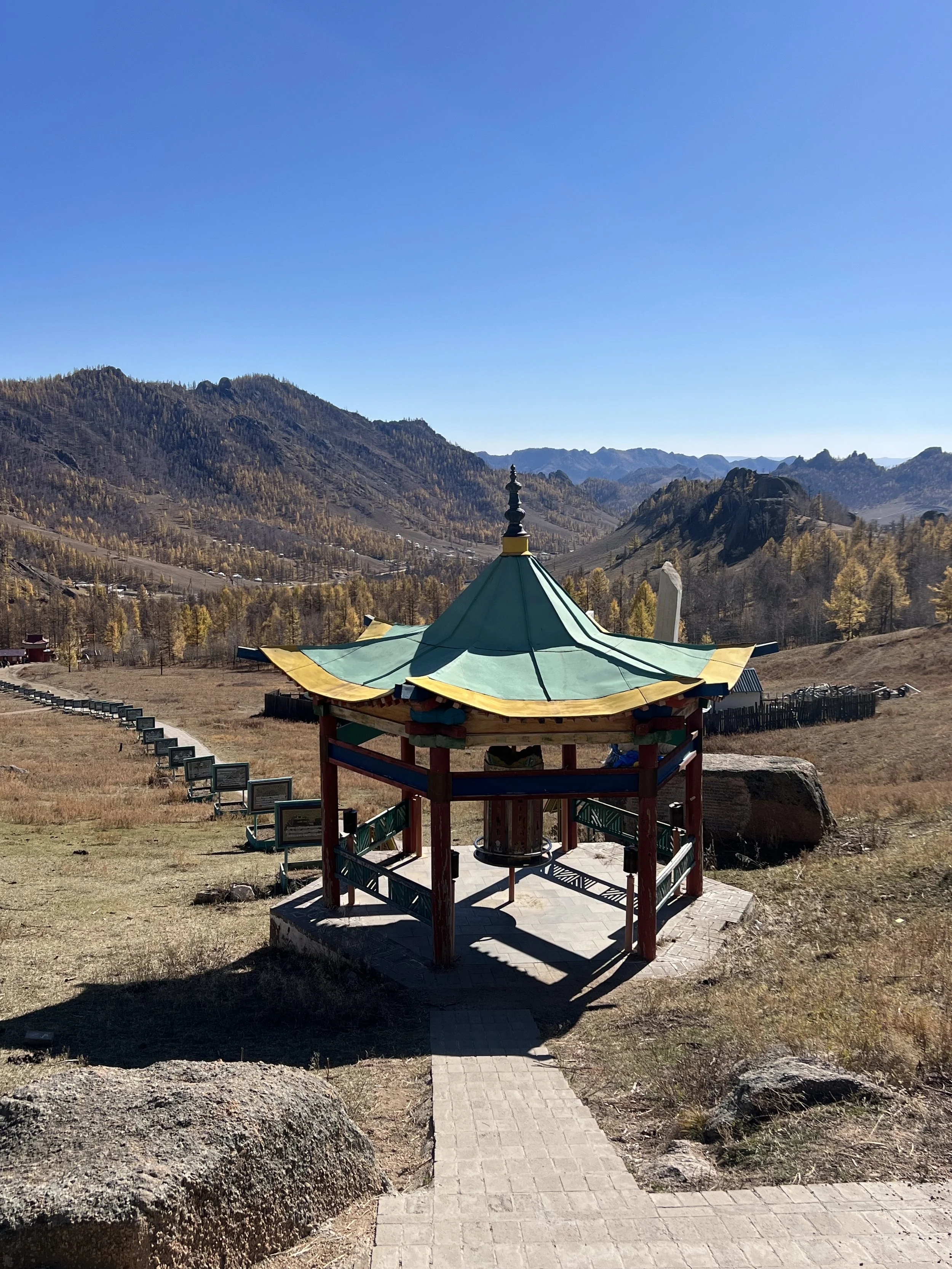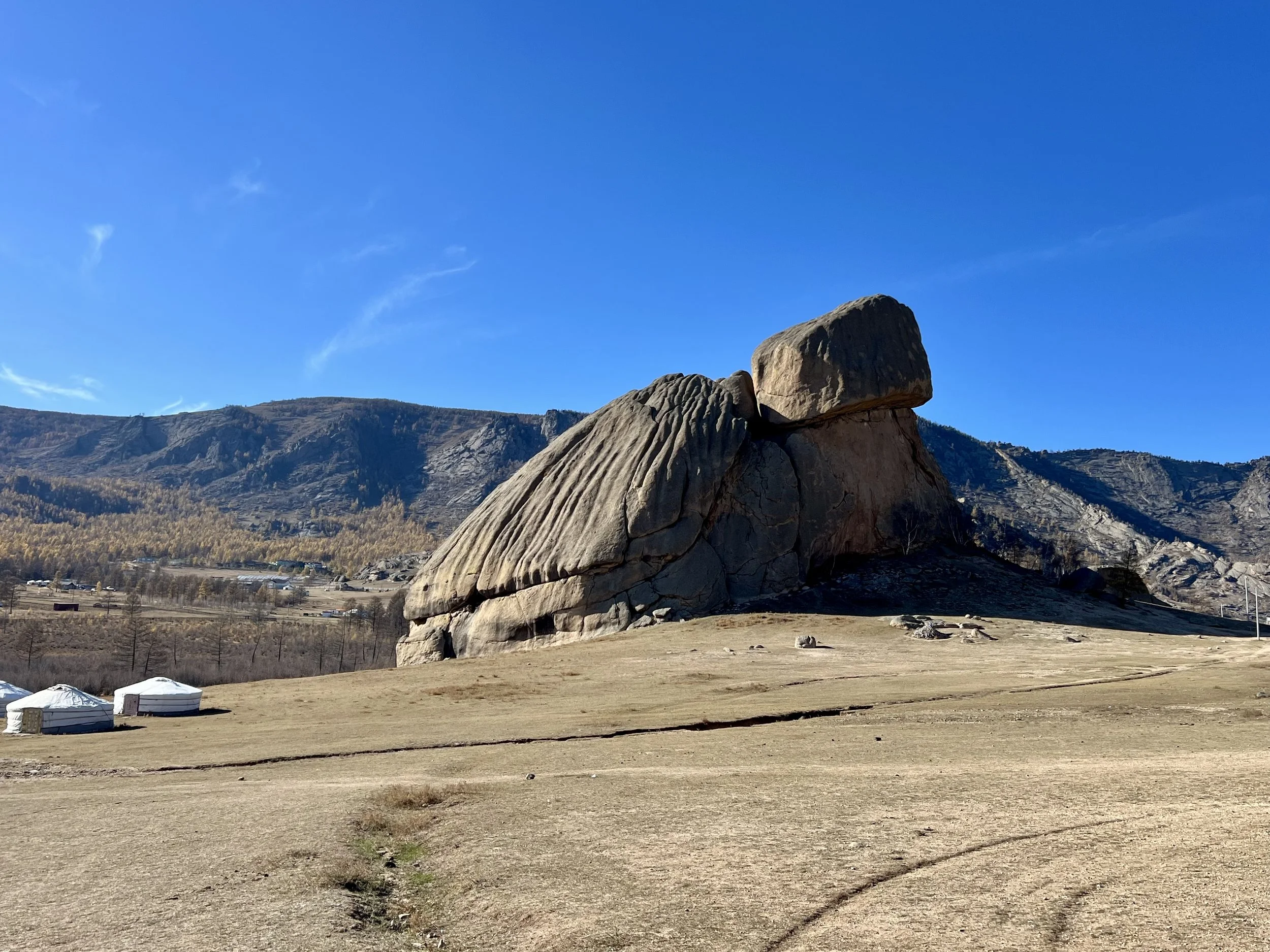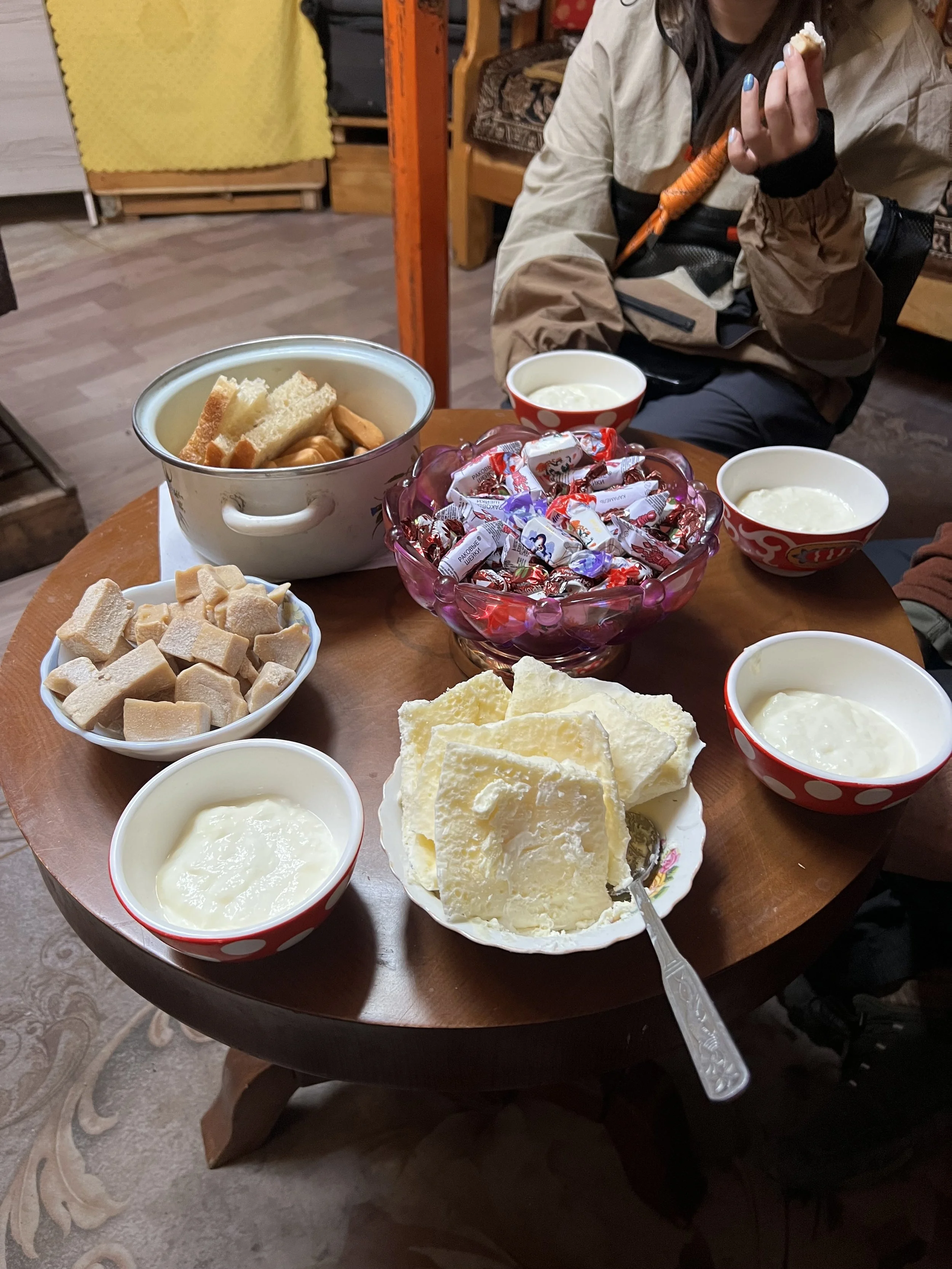Circle Mongolia: 1.5 weeks touring Nomadic Culture
In September 2025, I visited Mongolia with Amicus Travel covering Circle Mongolia (loop in the South) and the Golden Eagle Festival (2 hours east of Ulaanbaatar in Oglii - covered in a separate blog post). Read ahead for my trip report!
Note: If you don’t have international data, I highly recommend downloading an e-sim before your trip! While many of the huts have wifi, it’s good to have service in case of emergencies or to ensure your map loads. I use Airalo for my e-sims, which is affordable and is easy to download. Make sure your phone is e-sim compatible!
Day 0: Arrival in Ulaanbaatar (the UB)
Flights into UB in general come from South Korea, China, or Japan. I flew in from Seoul, and there are about 3-4 flights per day. The airport is an hour from the city with no traffic, so I was picked up with my family by the tour company (I refer to “we” in this blog post, which refers to the group of us). If you are traveling without an airport pick-up, I highly recommend organizing one in advance! There are not a lot of options to get a taxi, and you can get one in advance for cheap.
I will mention early that UB has hands down the worst traffic I have ever seen! One day it took us 1.5 hours to move 5km. Keep this in mind if you ever visit Mongolia!
Day 1: Mongol Cultural Experience & Hustain National Park
Today, we started our 11 day Circle Mongolia trip with Amicus Travel. After extensive research, we decided to go with this company because they are a local company and hit all the spots we wanted to go. Also, we wanted a private tour, and it included a very nice jeep with a driver and guide. The whole tour (including our additional trip to Eastern Mongolia for the Golden Eagle Festival) cost ~$4,800.
If you are looking for a cheaper and shorter option, check out this 8-day tour that goes to most of the same spots that I talk about in my blog below:
Mongol Cultural Experience (2hr drive)
From Ulaanbaatar, we drove to experience a nomadic family’s way of life. The family has spent the last 15 years in this one summer spot and allows tourists to visit their home from 10am to 12pm every day. They started off by riding up on camels, horses, and yaks. We got to try riding one of them (I chose the yak, which was amazingly comfortable!). After reaching their camp, the nomads demonstrated how they pack and move camp using the animals to haul via a cart and caravan across the plains. They move 4 times a year, mainly to preserve the lands for grasing, and move about 10km (nomads in the Gobi can move up to 50km depending on resources).
Next we entered a ger and were greeted by passing around a jar of tobacco, eating curd and cheese snacks, and drinking milk tea. The tea also has salt in it, and on first sip I wasn’t a huge fan, but it grew on me over time. The nomadic people showed us parts of the ger, with the left side being the “male” and the right the “female”, where saddle and horse gear were stored on the left and the kitchen on the right. There was a stove in the center and the walls were filled with a flattened down sheep’s wool. We were treated to a few songs played on traditional instruments with the famous throat singing about the local lands and one to mimic the horse.
In the next tent, we got to see how they distill fermented yak milk into alcohol using a single stage distillation system. One stage produces about 3% alcohol “vodka”, and they can distill up to about 15%. It was pretty tasty with a milky thick flavor. (I need to find a way to try this at home!). We got to see a few games, my favorite of which was like horseshoes combined with bowling but by using goat ankle bones to knock down other ankle bones. It was really hard!
Hustain Nuruu National Park (40min drive)
This national park is famous for the wild horses (takhi, also called Przewalski’s horse after a Russian explorer). They were close to extinction with only 14 left in the wild in 1992, but after breeding efforts and reintroduction to the wild, this horse is now elevated to “endangered” and there are ~840 in the park. We saw a whopping 30 of them in 2 different packs. I think this will be the 2nd highlight of my mom’s trip!
We also saw fox, deer and eagles, but no Pallas’s cat (the cutest thing ever!).
Food: hotel breakfast, lamb shank / potatoes / carrots / fried dough for lunch (omg meat coma), individual hot pot for dinner
Day 2: Kharkorin (4hr drive)
Kharkorin was the capital of the Mongol empire, instated by Ghengis Khan in ~1210. One of the most fascinating things for me is Ghengis Khan allowed the people to participate in any religion they wanted, so the city had mosques / churches / temples / etc and people from all over Asia and Europe living in it. While the town now does not have many ruins remaining due to the Chinese invading, we were able to see turtle statues marking the north and west sides of where the old city was; man, the city was huge.
We also visited a Buddhist temple called Erdene Zuu Monastery built in the late 1500s. It is also a huge complex with 108 steppes around the gate. Much of this has been destroyed as well, but a lot is still in tact with beautiful wall paintings and tapestries at the museum.
Finally (my britanica find of the day) is the penis stone, which was carved in the 1600s(?) to prevent monks from disobeying rules, and now serves as a fertility shrine.
Food: mushroom soup / dill cucumber / beef stir fry lunch, dumplings dinner
Day 3: Tsenkher Hot Springs (3.5h drive)
After a long 7mi run this morning, we got in the car to head to the hot spring. Today was the first day we veered off paved road for the foreseeable future, and we got a taste of what mongolian “roads” look like: vast plains with aspen and Siberian pine trees and seemingly no right way forward!
We stayed at a resort with private hot springs, with super hot, mild, and cold pools, routed from the hot springs source. There were nearly 10 different tourist camps in the area and it is a popular destination for locals. For dinner, I tried Tsuivan (fried noodles and beef), a traditional dish for herders in Mongolia.
Food: egg quesedilla, bolognese noodles, Tsuivan
Day 4-5: Orkhon Valley
Orkhon waterfall (4.5h drive)
After a morning hot springs soak, we got in the car for more adventurous off-roading. The roads today were much more rugged, with more rocky areas and creek crossings. We saw a motorcycle touring group on the road, which looked like a lot of fun.
We stopped at a beautiful viewpoint with stupas and shaman shrines dedicated to Ghengis Khan. The spires on the shaman shrine have horse hair and signify fire. There was snow in the mountains. After, we drove through a volcanic region displaying debris from a volcanic eruption 20,000 years ago.
After reaching camp, we took a 2.5 mile walk to the Orkhon waterfall. The trees gave us gorgeous fall colors as we explored around the waterfall above and at the waterfall.
Nomadic family
Visiting this family was different from the nomadic show on day 1 - I realized how the nomadic people really live in one ger. Beds on one side, kitchen on the other, and the organization of their limited belongings. We tried clotted yak milk on biscuits, which was amazingly delicious. I learned the process for how milk is used to its upmost and never wasted:
Milk —> boiled into clotted cream —> turned into yogurt (and from here can be distilled) —> dried into curd that can last 2-3 years
3h horse ride
Mongolian horses are smaller than other horses I’ve seen. We rode along the Orkhon River and got to “herd” goats before heading back and riding to where we were staying.
Food: egg cups and sausage, minestrone soup and dumplings, fried dumpling
Day 6: Ongi River Valley, Middle Gobi (7.5h drive)
We had a long drive today with landscapes changing from the lush valley with the Orkhon River and Siberian pine trees turned to vast plains and desert. We paralleled the new road construction out of the valley, a road that started build 3 years ago and is still a gravel path. After stopping at a viewpoint of the Orkhon River, we stopped for boxed lunch on the ground (since there were no rocks to sit on!). The road was rough at the start but as the land turns to plains, it became much smoother as we ripped over the dirt paths. I have no idea how our driver navigated so easily with no signs to point the way.
After arriving at our camp, we visited an old Buddhist monastery, which was mostly destroyed during the 1930s communist period in Mongolia. Over 200 monks were massacred this site due to the oppression that lasted for over 20 years. Along with ruins, there were 2 new temples constructed as the local people are rebuilding.
Rose bought me a traditional ice cream bar, which tasted exactly like the yak milk tea with salt. Apparently it’s delicious for Mongolian people but it was so weird and sour to me!
Food: dinner and breakfast were food platter arrays with meat and veggies
Day 7: Ongi Steppe - Bayanzag (3.5hr drive)
The drive today was uneventful, now that we entered the desert. We saw our first camel 🐫- in Mongolia, they have 2 humps, likely due to the more intense weather in the Gobi vs the Sahara. Mongolian people own and herd camels in this area. Their humps are filled with fat that they can convert into water humps, and they can survive about 70 days without water.
Upon arriving to camp, I took a 4 mile jog; there wasn’t much to see, and the distances were really deceiving. Things look closer and further away all at the same time.
In the afternoon, we visited a nomadic family that herds horses. They have to milk the mares every 2 hours during the day (compared to just in the morning for yaks). I tried mares fermented milk, which was less thick than yaks milk and slightly bubbly due to the fermentation, but likely had less than 1% alcohol. The family made felt trinkets so my mom and I bought little felt camel souvenirs.
After, we drove to the flaming cliffs where the first dinosaur eggs were found. In 1922, an American expedition through the Natural History Museum started in Peking and through Mongolia to find human evolutionary remains. Plot twist is they didn’t find human remains but lots of dinosaurs! The story was some guy slipped down a hill and basically face planted into hundreds of dinosaur eggs, some with embryo remains, proving that dinosaurs laid eggs. We walked along the cliffs but the weather turned into 40+mph wind gusts and rain, which made for quite the adventure.
Our sunset excursion was seemingly a fail, but we went back to the car and waited to be treated to the most incredible double rainbow.
Food: dumplings, beef stir fry
Day 8: Khongor Sand Dunes (3h drive)
We drove across the desert through some mountains (didn’t see any ibex though) to the sand dunes. After lunch and a quick jog, we visited a nomadic family that does camel tourist rides. We rode camels for 30 minutes on the sand dunes. The camels were surprisingly comfortable and the hump was like muscle. Did you know that there is fat in the camels hump (not water), and 1g of camel fat turns into 1.1g of water? The fat reacts with oxygen to gain the extra mass. So cool! Then, we climbed the closest sand dune which was about 200ft and not too steep.
I convinced the team to go to the steeper sand dune, so we drove over there and stoped by a sand sculpture competition from a recent festival. Very impressive work! Mom and I climbed the taller sand dune, which was about 600ft. I brought a sled to go down but it was much harder than expected! The sand is very grippy and you need a lot of momentum to get moving. Super fun day and the sand dunes were awesome!
Day 9: Yol Valley (3hr drive)
After a shorter drive today, we left the sand dunes (even driving over some of them on our route!) to arrive at the Yol Valley. The Valley like a slot canyon that extends 10km one way and has a river snaking through. We saw lots of pika and the local ibex, a wild mountain goat, on top of the mountain. We hiked about 4 miles in the canyon.
Day 10: Tsagaan Suvarga, aka the White Stupa (6hr total drive)
Today we finally left the Gobi desert. There were still camels, so not entirely out of the deserts, but there really was nothing in all directions, just dirt, until we arrived at the White Stupa. Similar to Bryce Canyon in the US, Tsagaan Suvarga is a natural sandstone structure that was formed from an ocean. It has colors of red, purple, and white from magnesium oxide mixtures that stands out in contrast to the dirt expanses.
We drove another 3 hours and stayed the night in a small town called Mandalgovi. Here I learned that Mongolia does not sell alcohol on the 1st of the month to reduce drinking in the population, and given it was October 1st, we have to wait until tomorrow to celebrate the end of our circle desert adventure!
Day 11: The UB (4.5hr drive)
Today, we drove back on a highway (omg!) to the city. Of course one hour of the driving was stuck in traffic, which we did not miss while in the rugged desert. After lunch at the hotel, we took off on a city adventure:
Ghengis Khan National Museum
This 7 story building covers Mongolian history from 1CE through modern day, with a focus on Ghengis Khan’s reign in the 1200s. This museum is famous because of its natural artifacts; ~80% of the museum is real (not replicas). They even have clothing and toys from 1-3CE, which absolutely blew my mind! The top floor has a gold Ghengis Khan statue where people come to pray. Note that it is a separate or upgraded ticket to enter the domed room, but you can glance inside at no extra cost! We were lucky to be able to go because the museum closed at 5pm and we arrived at 4:01pm, where we learned that they stop ticket sales at 4. Thank you to the wonderful Mongolian people for taking pity on us and allowing us to enter!
State department store
Also a 7-story building, this store has literally everything you can think of! It reminded me of a US Macys (mainly because of the perfumes on the bottom floor that one has to treacherously go through to see the rest of the building). It is a great place to grab souvenirs - on the 7th floor, they have everything you can imagine from paintings, masks, felt products, t-shirts, to fox animal hats and jackets. If you want camel socks, go on the 6th floor next to the leather goods!
Day 12-15: UB highlights & Golden Eagle Festival
Read about my experience at the Golden Eagle Festival in my separate blog! :)
Day 16: Terelj National Park
On our last day in Mongolia, we visited the local national park called Terelj on a day trip. While I went with our same tour company (Amicus), it was basically the same as a tour you can find with GetYourGuide:
We left around 8:30 and stopped at the Chinggis Khaan statue 50km outside the city. Built in 2012, this is a full stainless steel structure that has Chinggis sitting on horseback. You can take an elevator 3 stories up the building to come out of… the crotch region leading to a viewpoint - iconic. Inside there was a small museum on the first floor and souvenir shops.
After we drove into Terelj National park. There are loads of tourist camps in this area as it is one of the most popular places to visit outside of UB, tourists and locals alike. We had lunch at one of the tourist camps (which was gorgeous and had a super friendly, cute kitty, my #1 criteria) before heading to a meditation monastery.
Aryapala Temple Meditation Center was located in an expansive valley. As you walk up to the main temple, 108 mantras follow you on the stairs. The monastery has 108 steps leading up to it where you should repeat “on mani pad mi ho” in every step for good fortune. It was a really beautiful and peaceful place.
After, we did a short hike around turtle rock, where apparently some nobleman left his wife and silverware before battle, the silverware never discovered. Also, the rock actually looks like a turtle. We stopped at a nomadic family home on the way back, where we got to try delicious home made cow yogurt, hands down the most amazing yogurt ever. Our guide said she can’t eat store bought yogurt anymore and I understand why!
Our final evening we went to a steak house. I normally don’t like steak but the meat here is so fresh and tender I actually enjoyed it, although I only ate half! Great end to an epic trip.
My top picks
Local food: beef and noodle dish (Tsuivan)
Experience: visiting the eagle family in Tolbo and holding a golden eagle
Temple: 100ft tall copper Buddha at Gandantegchinlen Buddhist monastery
Evening / ger camp: Khongor sand dunes
Surprise moment: double rainbow over the flaming cliffs
